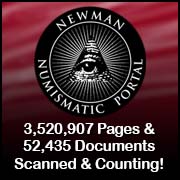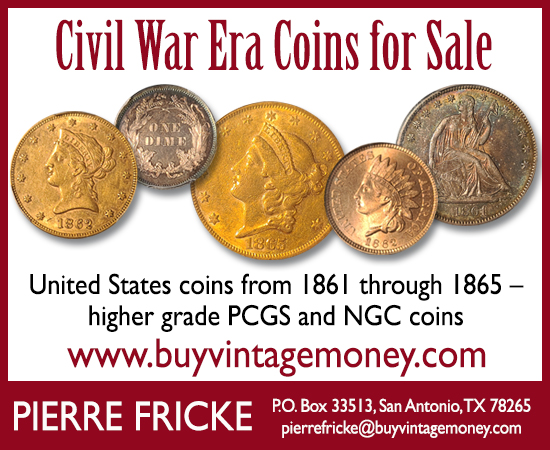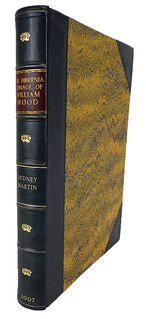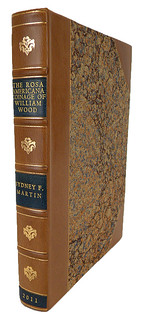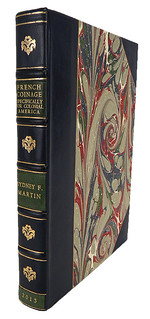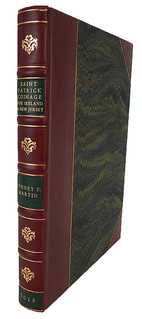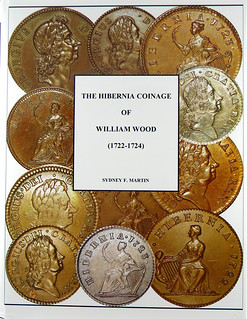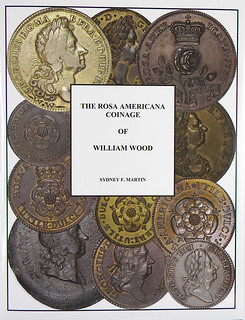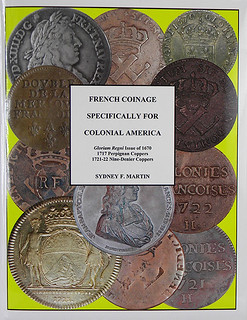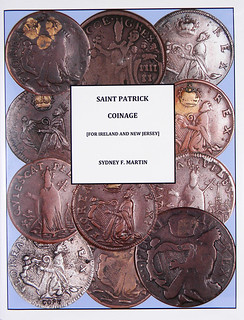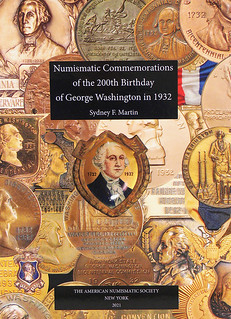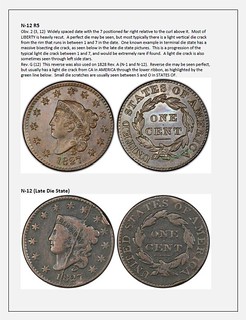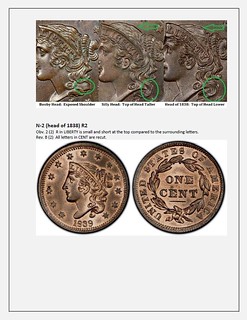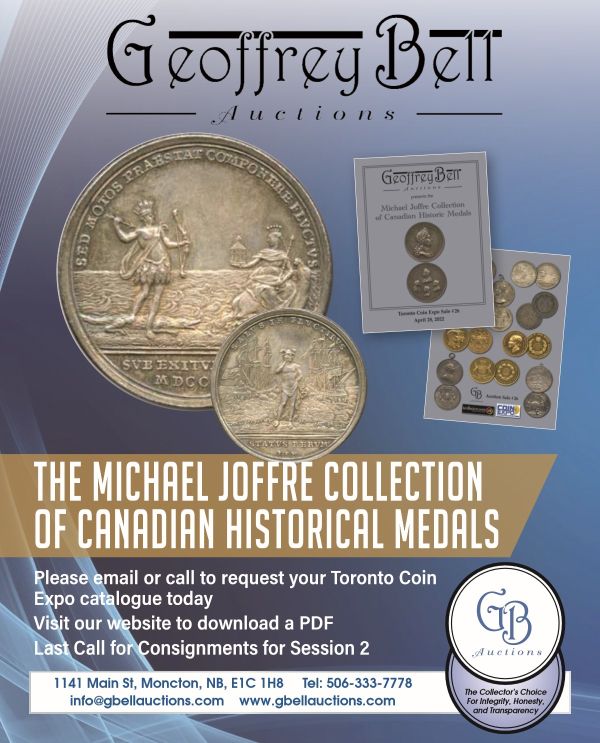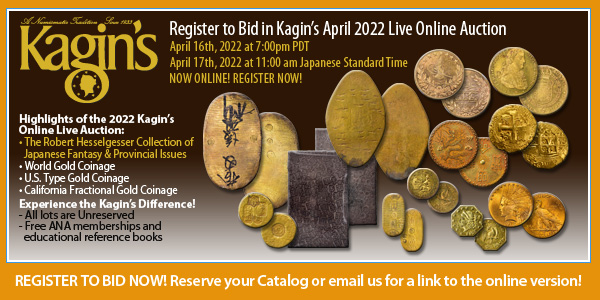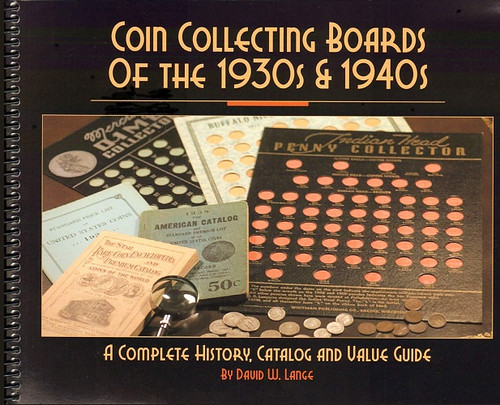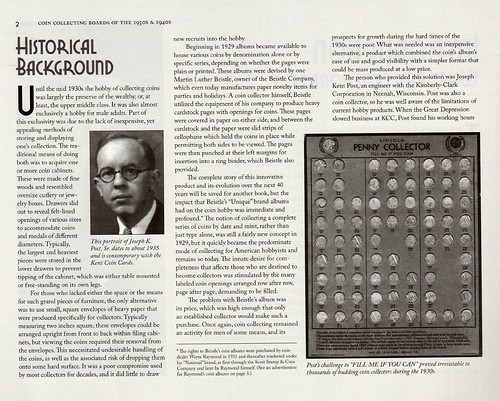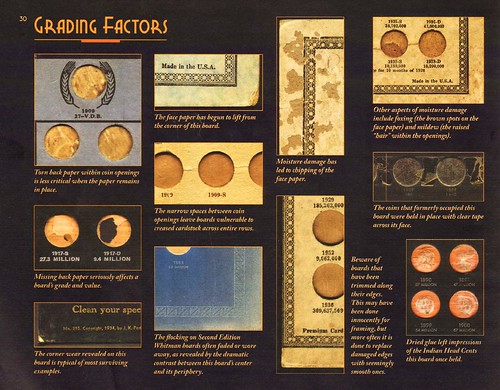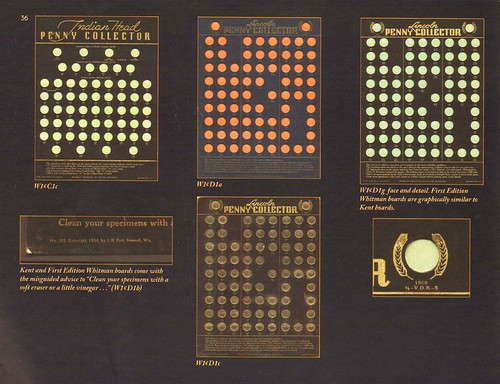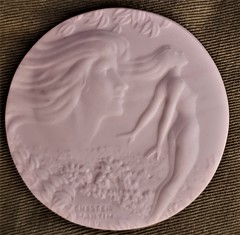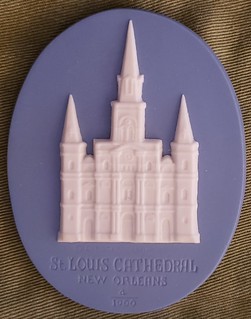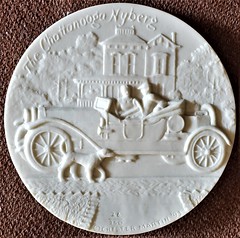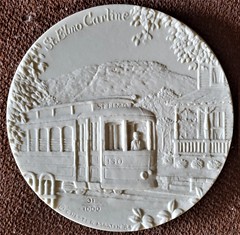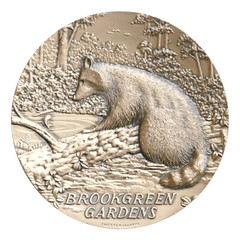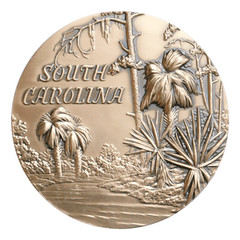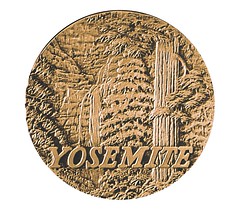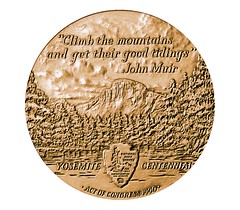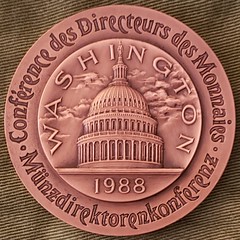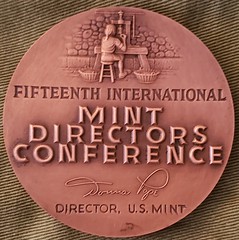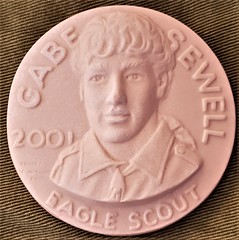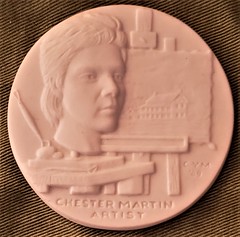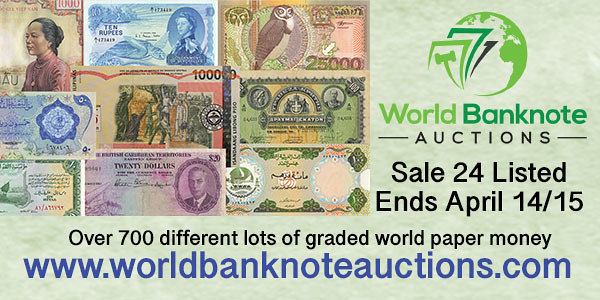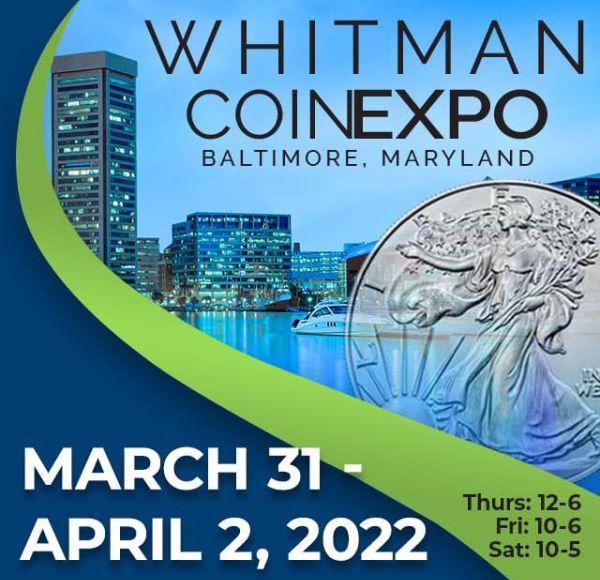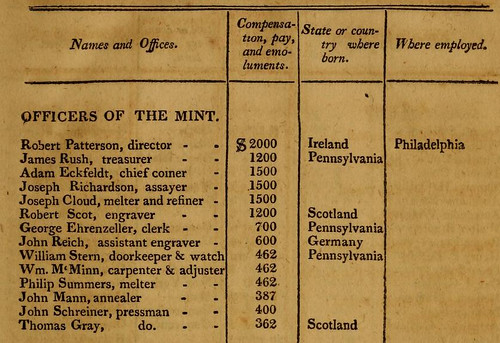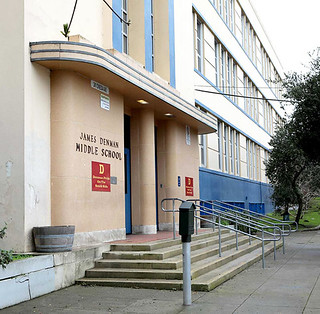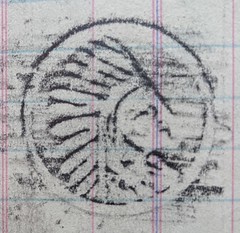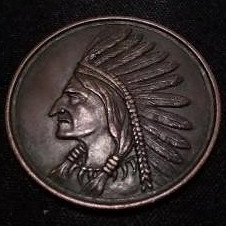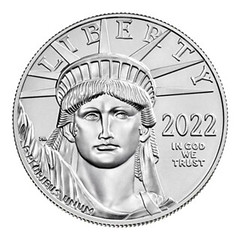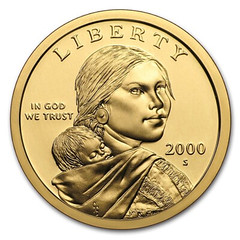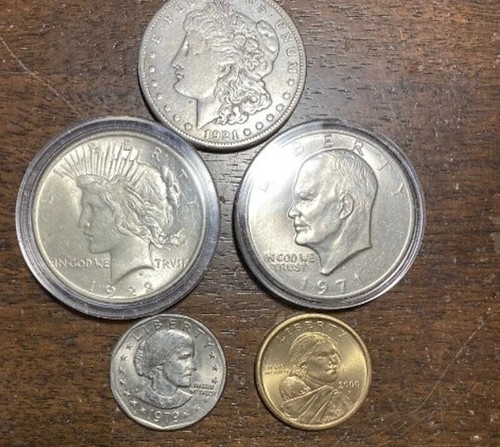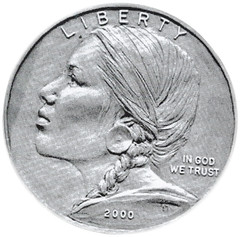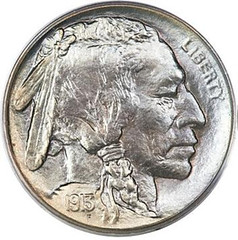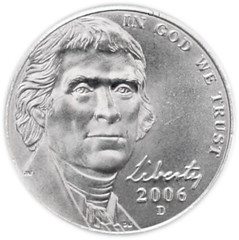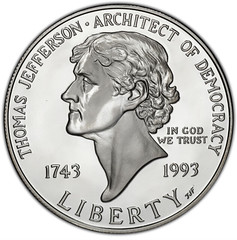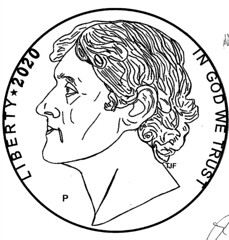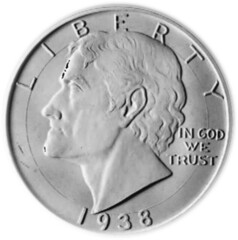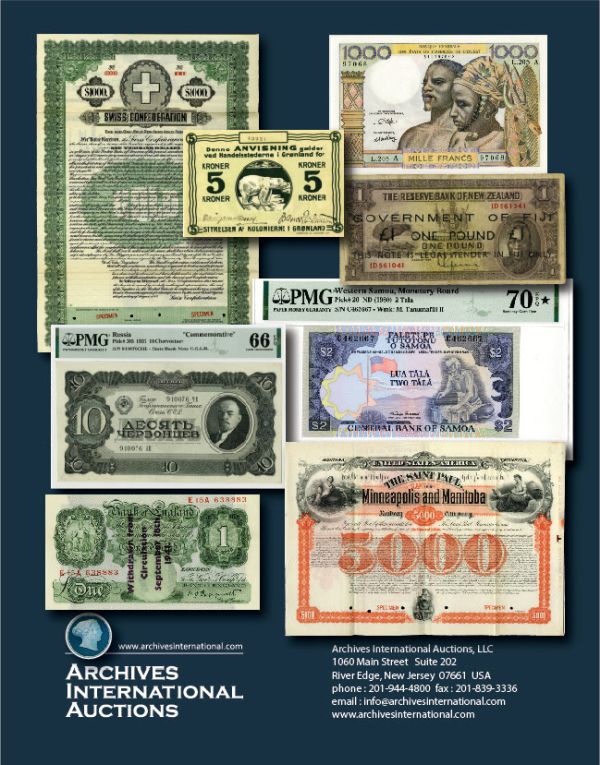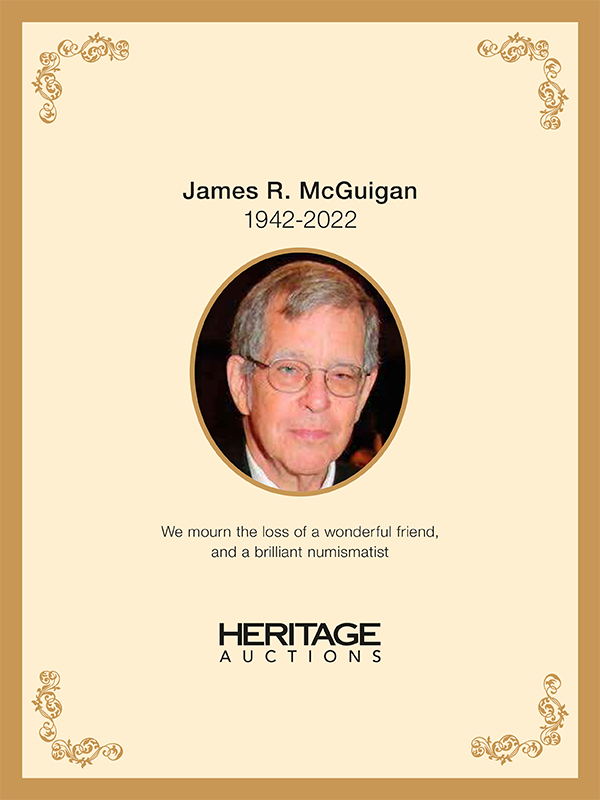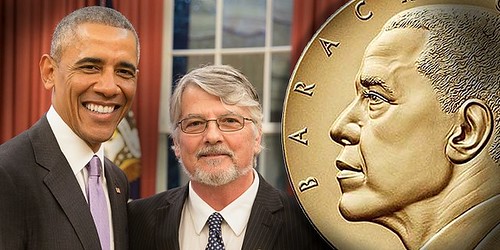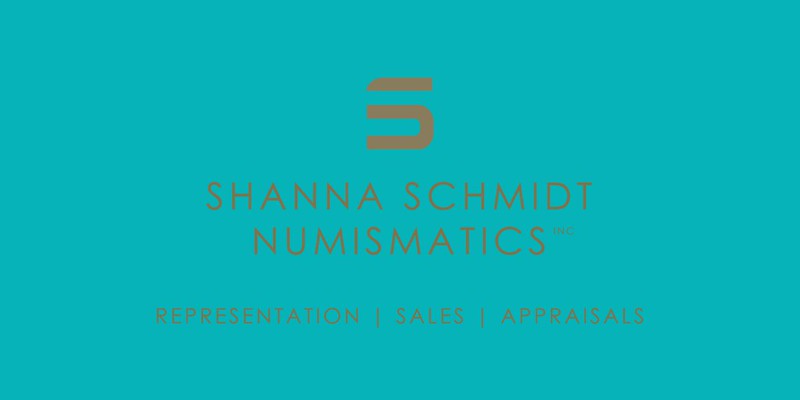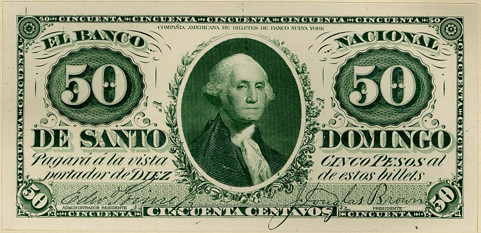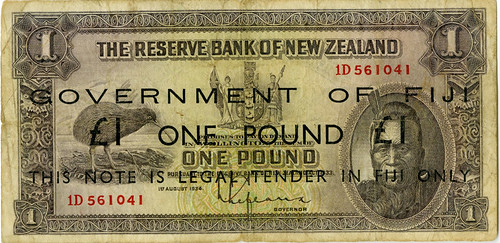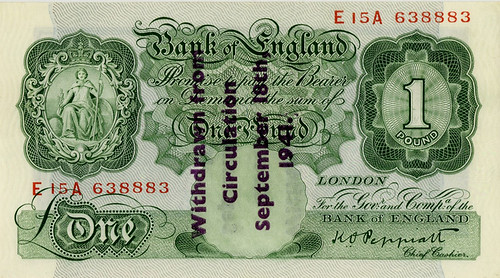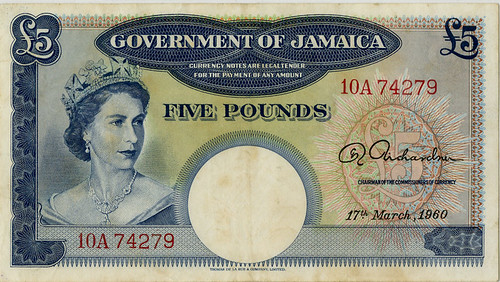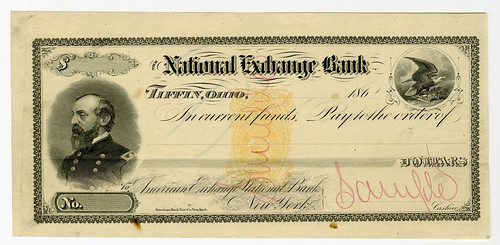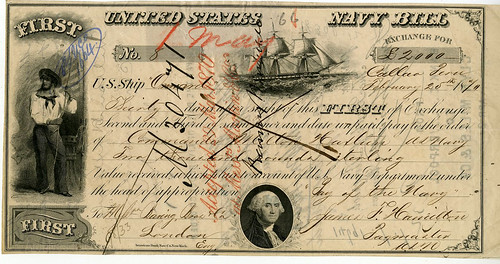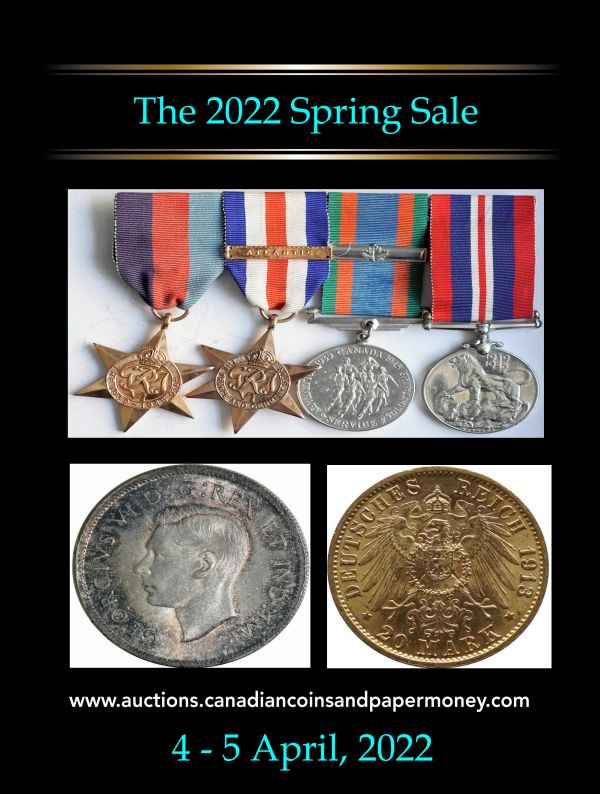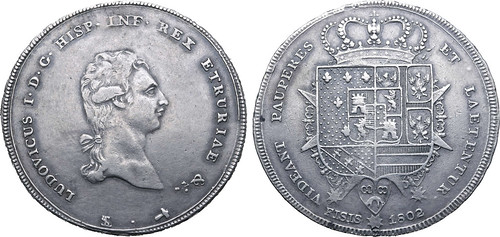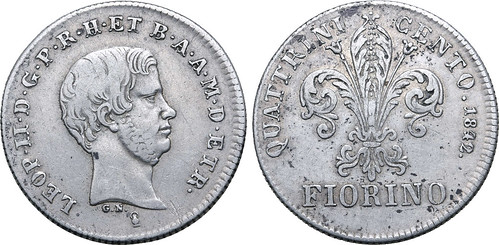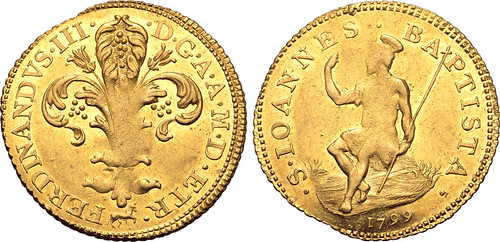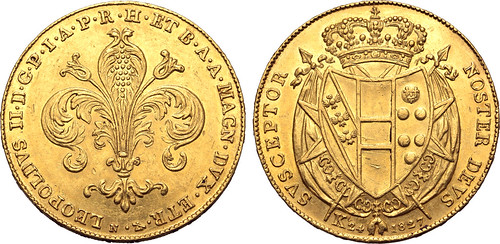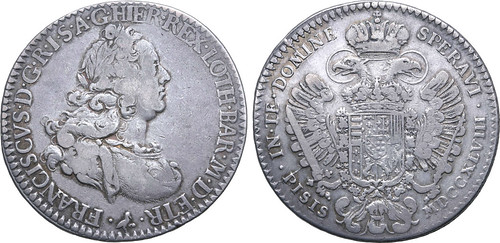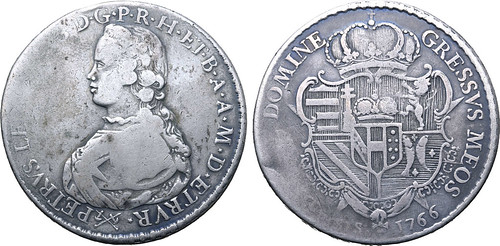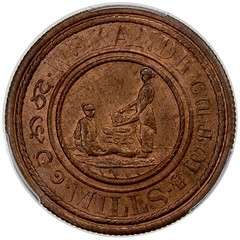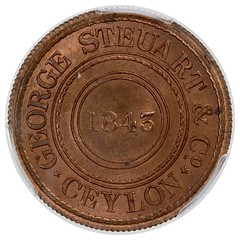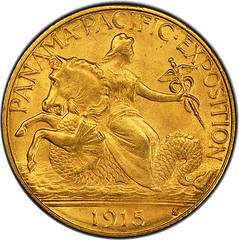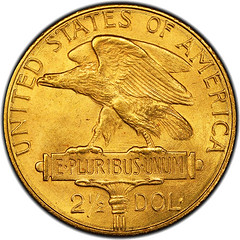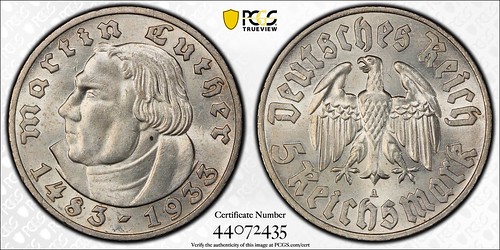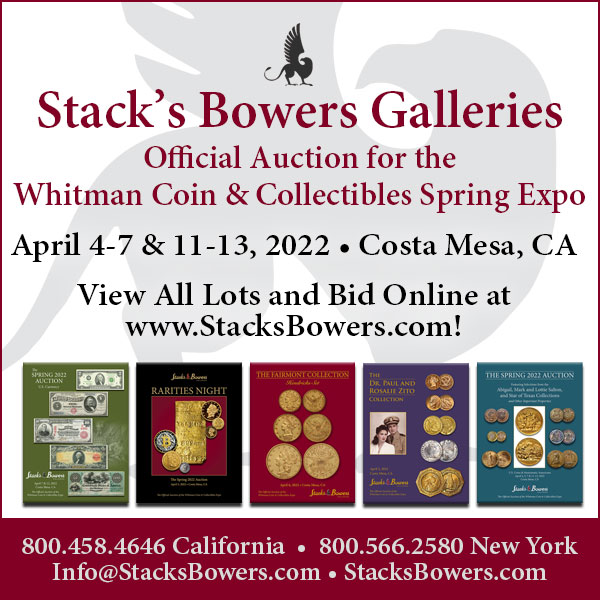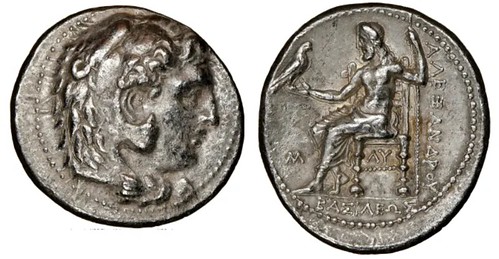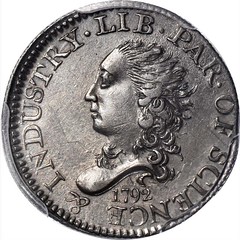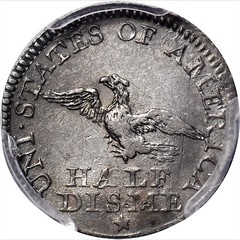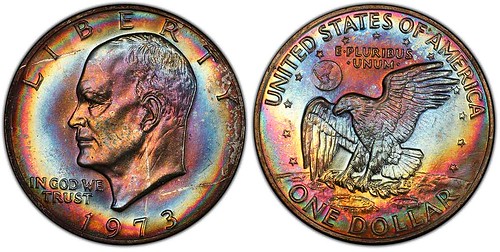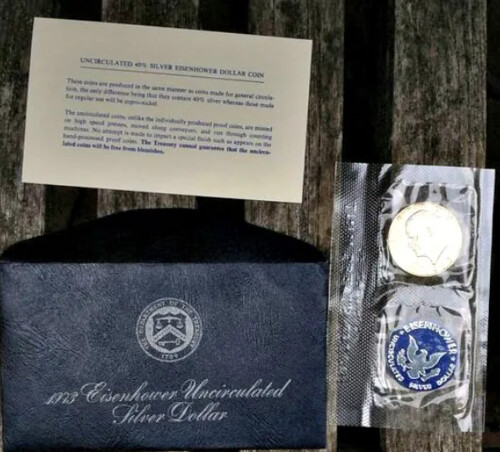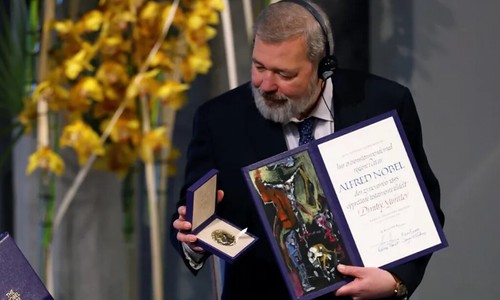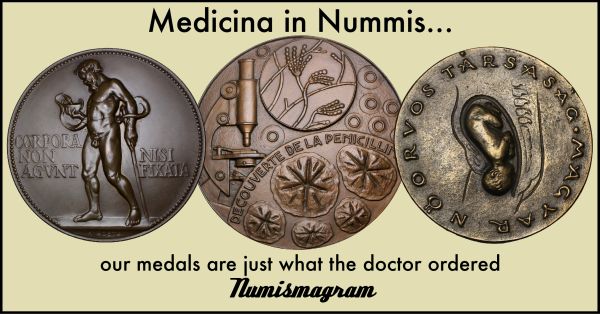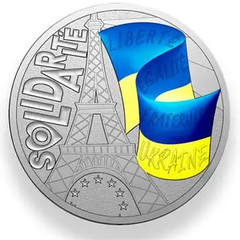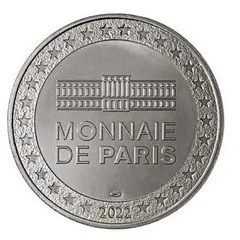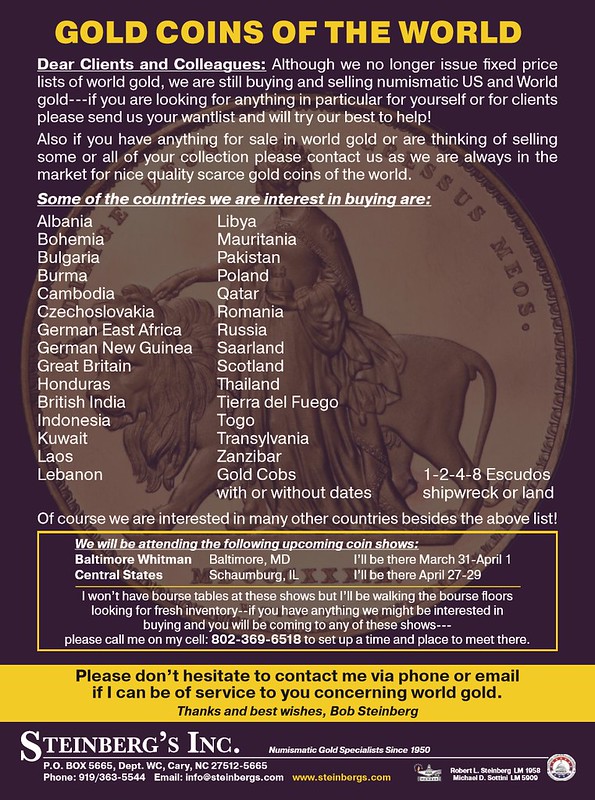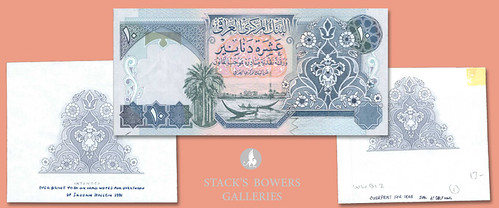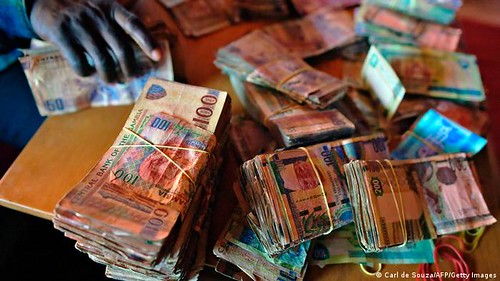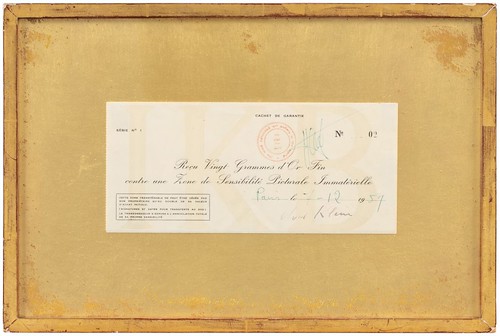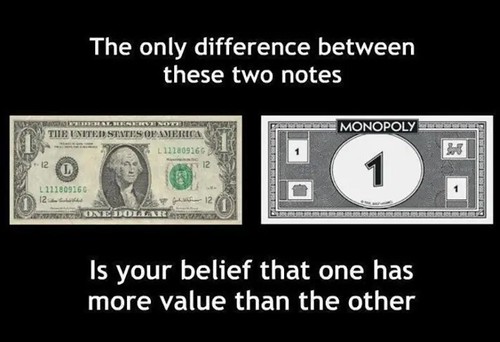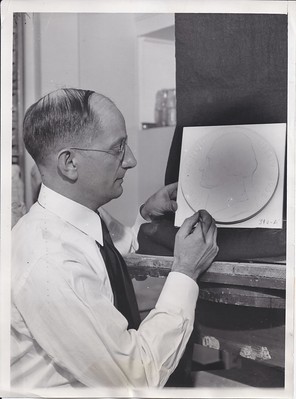
Visit our NBS Sponsors



About UsThe Numismatic Bibliomania Society is a non-profit association devoted to the study and enjoyment of numismatic literature. For more information please see our web site at coinbooks.org SubscriptionsThose wishing to become new E-Sylum subscribers (or wishing to Unsubscribe) can go to the following web page link MembershipThere is a membership application available on the web site Membership Application To join, print the application and return it with your check to the address printed on the application. Print/Digital membership is $40 to addresses in the U.S., and $60 elsewhere. A digital-only membership is available for $25. For those without web access, write to: Charles Heck, Treasurer AsylumFor Asylum mailing address changes and other membership questions, contact Chuck at this email address: treasurer@coinbooks.org SubmissionsTo submit items for publication in The E-Sylum, write to the Editor at this address: whomren@gmail.com BUY THE BOOK BEFORE THE COIN |
- WAYNE'S WORDS: THE E-SYLUM MARCH 27, 2022
- NUMISMATICS MEETS MODERN FORENSICS
- KOLBE & FANNING OFFER SYD MARTIN VOLUMES
- NEW BOOK: U.S. LARGE CENTS, 1816-1839
- NEW BOOK: TREASURE!
- NEW BOOK: OMAN BANKNOTES (1970 – 2021)
- NEW BOOK: MONEY IN THE AGE OF GRAPHIC SATIRE
- JOURNAL OF EARLY AMERICAN NUMISMATICS V4N2
- BOOK REVIEW: COIN COLLECTING BOARDS
- CHESTER Y. MARTIN (1934-2022)
- DAVID R. GOTKIN (1944-2022)
- THE OFFICIAL REGISTER AND WOMEN IN THE MINT
- VIDEO: FATHER, DAUGHTER AT 2021 USMEX SHOW
- NOTES FROM E-SYLUM READERS: MARCH 27, 2022
- FRONT-FACING VS. PROFILE VIEWS
- VOCABULARY TERM: IMMERSION FINISH
- QUERY: WHO IS BRUCE SMITH?
- DON EVERHART'S CAREER IN COINS, PART 9
- ARCHIVES INTERNATIONAL AUCTION 75
- THE MIKE BALLERINI COLLECTION
- NUMISMATIC NUGGETS: MARCH 27, 2022
- THE WORLD'S FIRST MONEY: COWRIE SHELLS
- TO WATCH A FORTUNE DISAPPEAR
- EMPIRE COIN CO. 1792 HALF DISME
- 1973 EISENHOWER DOLLARS
- NOBEL MEDAL TO BE SOLD FOR UKRAINE REFUGEES
- PARIS MINT SOLIDARITY WITH UKRAINE MEDAL
- 1991 GULF WAR BANKNOTE OVERPRINTS
- WHY AFRICAN COUNTRIES PRINT MONEY IN EUROPE
- NEPAL HAS MONEY TO BURN
- HOW MUCH FOR AN INVISIBLE ARTWORK?
- NATION REALIZES MONEY JUST AN ILLUSION
- FEATURED WEB SITE: FELIX SCHLAG
Click here to read the thin version on the web
Click here to subscribe
Click here to access the complete archive
To comment or submit articles, reply to whomren@gmail.com
Content presented in The E-Sylum is not necessarily researched or independently fact-checked, and views expressed do not necessarily represent those of the Numismatic Bibliomania Society.
WAYNE'S WORDS: THE E-SYLUM MARCH 27, 2022
 New subscribers this week include:
Sharon Hinkley.
Welcome aboard! We now have 6,970 subscribers.
New subscribers this week include:
Sharon Hinkley.
Welcome aboard! We now have 6,970 subscribers.
Thank you for reading The E-Sylum. If you enjoy it, please send me the email addresses of friends you think may enjoy it as well and I'll send them a subscription. Contact me at whomren@gmail.com anytime regarding your subscription, or questions, comments or suggestions about our content.
This week we open with a numismatic literature mystery, deluxe editions, four new books, a review, two obituaries, updates from the Newman Numismatic Portal, and more.
Other topics this week include middle date large cents, Treasure coins, Oman banknotes, married women working at the Mint, Bruce Smith, Chester Martin, Bruce Smith, Don Everhart, Bruce Smith, Felix Schlag, auction previews, cowrie shell money, numismatic fundraising for Ukraine, and the Money Illusion.
To learn more about Martin Nathaniel Daycius, the Dutch East India Company, West African Manilla Currency, the Brewey Mint, coin collecting boards, Cory and Ali Frampton, the Winchester Mint, front-facing portraits, U.S. Navy Bills of Exchange, a hippocampus, a 1792 Half Disme, and the Ukraine solidarity medal, read on. Have a great week, everyone!
Wayne Homren
Editor, The E-Sylum
NUMISMATICS MEETS MODERN FORENSICS
Numismatic Bibliomania Society Vice President Len Augsburger passed along this provocative report by a new NBS member, Sam E. Coudin of Montreal. -Editor
Numismatics Meets Modern Forensics
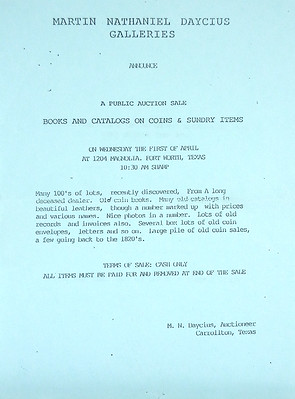 One of the most fabled bits of NBS history surrounds the March 1992 offering of a treasure trove of literature presented by the seller Martin Nathaniel Daycius Galleries (aka M. N. Daycius, a malaprop for
One of the most fabled bits of NBS history surrounds the March 1992 offering of a treasure trove of literature presented by the seller Martin Nathaniel Daycius Galleries (aka M. N. Daycius, a malaprop for mendacious
), supposedly of Fort Worth, TX. Ken Lowe reported on the event in the July 1992 edition of Out on a Limb and noted that more than a few NBSers were taken in by the April Fools ruse, a sale said to contain many old catalogues on beautiful leathers,
lots of old records, and invoices,
large pile of old coin sales, a few going back to the 1820s,
and so on. The seller's address was 1204 Magnolia, which, upon further investigation, turned out to be the old B. Max Mehl building.
George Kolbe reported in the Ford library catalog (June 2005, part II, lot 1062) that John J. Ford, Jr. was completely taken in by the scheme and was convinced the sale represented remainders from the Mehl library. Ford contacted Texas dealer John Rowe, along with Coin World editor Beth Deisher, to see what additional facts might be ascertained. Ford eventually spoke with Kolbe, who reported that it was with more than a little difficulty that Ford was persuaded
otherwise. Myron Xenos later reflected on the prank in the Fall 2003 and Spring 2004 issues of Asylum.
The only piece of physical evidence is the sale flyer itself, an 8.5x11 typescript on light blue stock, which was folded in half and stapled before sent to various NBS members. The Ford example bore a March 21st Texas postmark and a 29c stamp. After acquiring another example of this solicitation, my investigation focused on the same 29c stamp and any DNA evidence remaining between the stamp and the flyer. I am thrilled to report that a forensics firm has successfully acquired a DNA profile from this sample. The investigation now becomes a matter of genetic genealogy. The public has become more familiar with this technique in recent years, as old DNA samples can be used to form links to current DNA databases. Once a link is found, family trees are built to identify possible matches (most typically suspects in criminal investigations).
Although the perpetrator of this evil scheme is not necessarily the same person who applied the stamps, it seems logical that whoever prepared the mailing is aware of the identity of the mastermind. At this point, I appeal to the NBS membership to assist with the investigation. First, for funding to defray costs. While DNA testing has become more accessible in recent years, the cost is not insignificant. Second, in order to narrow the scope of the search, I request DNA samples in order to rule out various possibilities. This is as simple as signing and sealing an envelope, from which a genetic profile can be extracted (note, I will verify signatures against original NBS member applications). I may be contacted at Sam.E.Coudin@gmail.com.
To read the earlier E-Sylum article, see:
SELECTIONS FROM THE SKLOW LITERATURE SALE #21
(https://www.coinbooks.org/club_nbs_esylum_v17n04.html)
THE BOOK BAZARRE
KOLBE & FANNING OFFER SYD MARTIN VOLUMES
As announced in an email to customers this week, Kolbe & Fanning are offering at fixed prices both regular and deluxe editions of the excellent books written by the late Sydney F. Martin. -Editor
Kolbe & Fanning Numismatic Booksellers will be offering the outstanding numismatic library formed by Sydney F. Martin for sale at auction on Saturday, April 30, 2022. In anticipation of the sale, we are making this special offering of deluxe editions of Martin's works. These were bound for the author using his specifications. Only a few copies of each were made.
Deluxe Hibernia Coinage Volume
THE HIBERNIA COINAGE OF WILLIAM WOOD (1722–1724).
Sydney F. Martin
A special binding in dark blue half calf, executed by Alan Grace for the author.
Deluxe Rosa Americana Volume
THE ROSA AMERICANA COINAGE OF WILLIAM WOOD.
Sydney F. Martin
A special binding in tan half morocco, executed by Grace Bindery for the author.
Deluxe French America Volume
FRENCH COINAGE SPECIFICALLY FOR COLONIAL AMERICA.
Sydney F. Martin
A special binding in blue half morocco, executed by Dragonfly Bindery for the author.
Deluxe Saint Patrick Volume
SAINT PATRICK COINAGE (FOR IRELAND AND NEW JERSEY).
Sydney F. Martin
A special binding in burgundy half morocco, executed by Dragonfly Bindery for the author.
The regular editions of Syd Martin's books are also available, including his posthumous publication on Washington bicentennial pieces:
To Browse In-Stock Titles by Sydney F. Martin, see:
https://www.numislit.com/advSearchResults.php?orderBy=mostrecent&action=search&cat_conj=or&keywordsField=martin%2C+sydney+f.
NEW BOOK: U.S. LARGE CENTS, 1816-1839
David Kahn submitted this overview of the new book on Middle Date cents by Robert Powers. Thanks! -Editor
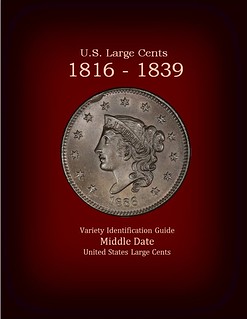 Robert Powers, a very accomplished, young author is back, with a brand new publication. His Middle Date Large Cent Variety Identification Guide is the follow-on from his first volume, dealing with Early Date LC's, 1794-1814. His new Middle Date guide, a 158 page, full color, soft cover, 8.5x11" up to date attribution guide for all of the Newcomb varieties of the Middle Dates, was just published and arrived here last week.
Robert Powers, a very accomplished, young author is back, with a brand new publication. His Middle Date Large Cent Variety Identification Guide is the follow-on from his first volume, dealing with Early Date LC's, 1794-1814. His new Middle Date guide, a 158 page, full color, soft cover, 8.5x11" up to date attribution guide for all of the Newcomb varieties of the Middle Dates, was just published and arrived here last week.
Powers has been collecting coins for over 30 years, and has had a strong interest in Bust, Seated, and Early American Copper for almost as long. He has recognized the need for updated attribution guides in those series, and has set out to publish a series of easy to understand guides with the highest quality photos available. Currently available are two new publications on Early Date Large Cents as well as Middle Date Large Cents. Robert has future plans for a comprehensive Half Cent guide, as well as a new guide covering Overton varieties of Bust Halves.
The thing that most resonates with me about these publications is the overall reliance on recognizing dies and the coins they produced in much the same way that you recognize people's faces. I learned long ago - primarily from among the best mentors a collector could have, Dr. Michael Summers - to do just that, and it has served my needs very well. In this way, one can identify coins quickly and without measuring anything...many times without the aid of a glass. I'm a fan of Powers' work, because he takes the same approach. The book is crisp, clean and easy to understand, yet it is not simplistic. It invites study and reflection, and can be very eye-opening. His method may not work for you, but it sure is worth giving it a try. If it works, you'll never measure anything or have to deal with a cluttered, jargon-filled guide again! Give this new book a shot, and for that matter, buy a copy of both Powers' books. We'll have them at Baltimore and they are available right now in our Numismatic Literature section. DKRC is the exclusive distributor of these at present.
The illustrations are excellent large photos of higher-grade specimens, printed about four to a page. -Editor
For more information, or to order, see:
US Large Cents, 1816-1839, Variety Identification Guide by Robert Powers
(https://www.davidkahnrarecoins.com/us-large-cents-1816-1839-variety-identification-guide-by-robert-powers.html)
To see the DKRC Numismatic Literature section:
https://www.davidkahnrarecoins.com/inventory/numismatic-literature.html
To read the earlier E-Sylum articles, see:
NEW BOOK: 1793-1795 LARGE CENT VARIETY GUIDE
(https://www.coinbooks.org/v23/esylum_v23n15a05.html)
NEW BOOK: LARGE CENT 1793-1814 VARIETY GUIDE
(https://www.coinbooks.org/v23/esylum_v23n50a02.html)
NEW BOOK: TREASURE!
Peter Jones has just published a new book on shipwreck coins entitled TREASURE! Congratulations! -Editor
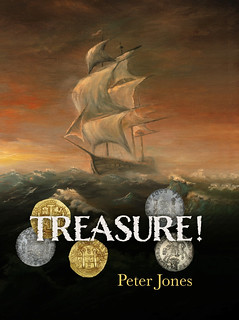 TREASURE! describes the author's personal journey with shipwreck treasure coins.The book is profusely illustrated with color photos, and includes full page pictures of a collection of 88 coins and medals related to shipwrecks.
TREASURE! describes the author's personal journey with shipwreck treasure coins.The book is profusely illustrated with color photos, and includes full page pictures of a collection of 88 coins and medals related to shipwrecks.
Intended for treasure and coin collectors, history buffs, nautical enthusiasts and divers, Peter Jones' book TREASURE! puts the fascinating subject of treasure coins into historical perspective. It is a companion book to the First Coins of the Americas, which Bob Hoge wrote about in The E-Sylum. Dan Sedwick wrote the foreword to both books.
The book is profusely illustrated with color photos, and includes full page pictures of 88 coins and medals. The book is 8.5 by 11 inches, hard back with 398 pages. Daniel Sedwick in his foreword says:
The concept of collecting coins from shipwrecks is relatively new, practically unheard of before the 1960s, when metal detectors and SCUBA diving began to make shipwreck salvage commercially viable. Since that time, coins that were previously considered melt-value items have taken on new lives as historical objects, tangible relics from maritime tragedies related to storms, war, piracy or navigational error (and combinations thereof). What better way to appreciate history than to hold in your own hands actual objects that were there firsthand?
This latest work from Peter Jones describes his collecting journey through several centuries and nationalities worth of shipwrecks around the world. Peter did not just collect the coins—he collected the histories, and he spent countless hours researching and writing about the journeys that brought each coin to him. In many ways, this book is inspired by and expanded from Tom Sebring's 1986 classic Treasure Tales. Indeed Peter is very much like Tom was—eminently curious about every topic and eager to share every bit of knowledge to be found. In the process Peter has created this masterful book, a veritable Handbook for Treasure Collectors.
Just about every treasure wreck is here, or at least the most important ones, meticulously organized by nationality and time period, with tables of data throughout and quick reference summaries at the end. While eminently readable, this is not just a handbook or history book—it is also a picture book, supremely illustrated with top-quality coin photographs, maps, portraits and other graphics that bring everything to life.
All five W's—who, what, where, when and why—are not just answered but shown. Such a beautiful book is nothing short of inspiring. So whether you are an advanced treasure collector or just curious, enjoy Peter's journey in these pages and experience the rush of truly owning history. The real treasure is knowledge! Sections include Spanish shipwreck stories, Dutch shipwreck stories, British shipwreck stories, American shipwreck stories, other nationality shipwreck stories. The book finishes with a chapter on captured ships and other stories.
The first chapter reviews the history of money, money in the Spanish New World, Potosi mining and minting, the Spanish fleet system, the Dutch East India Company, the history of diving, the Silk Road, a brief history of ships, navigation and weather, finding shipwrecks, and the politics of salvage. A 17-page glossary includes points about shipwrecks, ship prefixes, types of ships, detailed Spanish colonial cob identification guide, colonial rulers, money systems and weights, Mexican, English, and French metrology, US GDP, population, and labor costs from 1790 to 2017, and maps of Spanish viceroyalties.
- 75 shipwreck coins and medals and their stories
- richly illustrated with full color photos and full-page photos of shipwreck coins
- background of coins, Spanish New World and fleet system, and Dutch East India Company
- history of diving, ships, and navigation
- extensive reference tables on English, French, and Mexican coins and cob identification
Peter is a life member of ANA, NENA and USMEXNA, and a member of ANS, IBSS, C4, and MCA, and president of his local coin club, the Mansfield Numismatic Society.
Dan Sedwick writes,
"A veritable Handbook for Treasure Collectors. Just about every treasure wreck is here... meticulously organized by nationality and time period. While eminently readable, this is not just a handbook or history book — it is also a picture book, supremely illustrated with top-quality coin photographs, maps, portraits and other graphics that bring everything to life. Such a beautiful book is nothing short of inspiring."
The book is available from bookbaby at https://store.bookbaby.com/book/treasure
Enter TWENTYOFF at checkout for $20 off the $99 price, net $79.
It is also available at Amazon and Daniel Frank Sedwick LLC.
To read the earlier E-Sylum article, see:
NEW BOOK: THE FIRST COINS OF THE AMERICAS
(https://www.coinbooks.org/v23/esylum_v23n47a04.html)
NOTES FROM E-SYLUM READERS: NOVEMBER 29, 2020
Reader Thoughts on First Coins of the Americas
(https://www.coinbooks.org/v23/esylum_v23n48a13.html)
NEW BOOK: OMAN BANKNOTES (1970 – 2021)
From Muscat Daily comes this article about a new book on the banknotes of Oman. -Editor
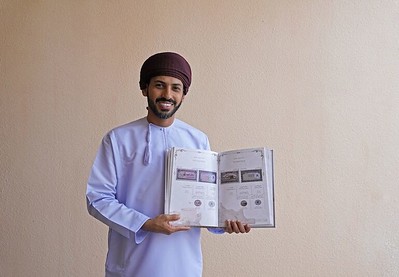 Omani youth to launch a new book – Oman Banknotes (1970 – 2021) which includes images of three different Sultans on Omani currency
Omani youth to launch a new book – Oman Banknotes (1970 – 2021) which includes images of three different Sultans on Omani currency
Abdulaziz al Kharusi, a young flight engineer, has let his creative pursuit of currencies take flight with an ambitious attempt to launch a chronicle of Omani banknotes.
The hardbound book – Oman Banknotes (1970 – 2021), published with exclusive images of banknotes and cultural symbols, accompanied by relevant text in Arabic and English, provides interesting insights into the design and relevance of various bank notes that had been floated during the past five decades. The book, to be launched on March 17, also serves as a guide into the history and evolution of the Omani currency in a simple, yet effective, manner.
What began as an act of curiosity in his childhood, when he found an abandoned ‘quarter anna' (an erstwhile coin minted in India) which sparked his interest into learning about coins and currencies, soon blossomed into a fulfilling hobby for Kharusi. Over the past two decades or so, he has been collecting/procuring Omani banknotes and coins as well as those belonging to other countries in all earnestness, often paying huge sums to procure rare coins and notes.
The book, he admits, is an extension of his intellectual pursuit for learning and collecting Omani banknotes, and though it will be available for a price of RO12, earning a fortune from this collector's edition is not his goal. Rather, making it see the light of day was a dream come true for Kharusi who has a few more ideas on the same theme up his sleeve.
Collecting currencies – banknotes and coins – is my hobby and I have done around 62 exhibitions of these in Oman and different countries in the region in the past few years,
says Kharusi who has also received a couple of awards for his collection – the result of painstaking efforts, visiting museums and collectors as well as conducting relevant research.
Currently, Kharusi has between 6000-7000 banknotes and coins, as well as certain old property documents indicating sale deeds involving old currency.
The book features only Omani banknotes and Kharusi conducted extensive research as well as procured permissions from the relevant ministries as well as the Central Bank of Oman to authenticate its contents.
The images of the various denominations of banknotes used in Oman over the past 50 years bears varied symbols of Oman cultural heritage a well as portraits of three Sultans of Oman – late Sultan Said bin Taimur, late Sultan Qaboos bin Said and the current ruler of Oman, His Majesty Sultan Haitham bin Tarik.
The various sections in the book include chapters on the features of Oman banknotes, Sultans of Oman who issued banknotes, financial institutions where currencies get issued, signatures, symbols and their significance – forts and castles, handicrafts, crafts, Islamic architecture, places in Oman, wildlife, modern renaissance symbols, and national symbols, besides a chapter on various issues of banknotes.
Found via News & Notes from the Society of Paper Money Collectors (Volume VII, Number 40, March 22, 2022). -Editor
To read the complete article, see:
Omani youth launches book – Oman Banknotes
(https://www.muscatdaily.com/2022/03/15/omani-youth-launches-new-book-oman-banknotes/)
NEW BOOK: MONEY IN THE AGE OF GRAPHIC SATIRE
A new book examines graphic satire and paper money in late eighteenth- and early nineteenth-century Britain. -Editor
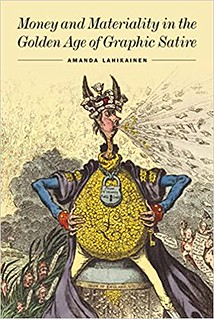 Money and Materiality in the Golden Age of Graphic Satire
Money and Materiality in the Golden Age of Graphic Satire
by Amanda Lahikainen
Hardback
August 2022 • ISBN 9781644532690 • $120.00
Paperback
August 2022 • ISBN 9781644532683 • $34.95
* E-Book Available
Series
Studies in Seventeenth- and Eighteenth-Century Art and Culture
This book examines the entwined and simultaneous rise of graphic satire and cultures of paper money in late eighteenth- and early nineteenth-century Britain. Asking how Britons learned to value both graphic art and money, the book makes surprising connections between two types of engraved images that grew in popularity and influence during this time. Graphic satire grew in visual risk-taking, while paper money became a more standard carrier of financial value, courting controversy as a medium, moral problem, and factor in inflation. Through analysis of satirical prints, as well as case studies of monetary satires beyond London, this book demonstrates several key ways that cultures attach value to printed paper, accepting it as social reality and institutional fact. Thus, satirical banknotes were objects that broke down the distinction between paper money and graphic satire ?altogether.
About the Author
Amanda Lahikainen is the executive director of the Ogunquit Museum of American Art in Ogunquit, Maine. Prior to joining OMAA, she served as an associate professor of art history and chairperson of the art department at Aquinas College in Grand Rapids, Michigan.
Found via News & Notes from the Society of Paper Money Collectors (Volume VII, Number 40, March 22, 2022). -Editor
For more information, or to order, see:
Money and Materiality in the Golden Age of Graphic Satire
(https://udpress.udel.edu/book-title/money-and-materiality-in-the-golden-age-of-graphic-satire/)
Money and Materiality in the Golden Age of Graphic Satire
(https://www.rutgersuniversitypress.org/money-and-materiality-in-the-golden-age-of-graphic-satire/9781644532683)
Money and Materiality in the Golden Age of Graphic Satire (Studies in Seventeenth- and Eighteenth-Century Art and Culture)
(https://us.amazon.com/Materiality-Graphic-Studies-Seventeenth-Eighteenth-Century/dp/1644532689)
JOURNAL OF EARLY AMERICAN NUMISMATICS V4N2
The latest issue of the Journal of Early American Numismatics (JEAN) has been published. Editor Chris McDowell shared this summary. Thanks. -Editor
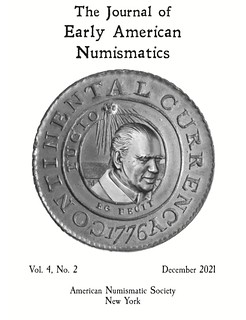 This is the December 2021 issue of the Journal of Early American Numismatics (JEAN). The issue was delayed because of supply chain problems, which have been addressed and will not reoccur. I received my copy this past week, and subscribers should be getting them any day now if they have not already been delivered.
This is the December 2021 issue of the Journal of Early American Numismatics (JEAN). The issue was delayed because of supply chain problems, which have been addressed and will not reoccur. I received my copy this past week, and subscribers should be getting them any day now if they have not already been delivered.
The cover features the Continental dollar along with an image of Eric Newman because this issue starts with an unpublished manuscript by Mr. Newman on the Continental dollar. Even after all these years, Newman still has something to contribute to the topic.
This issue also contains a medley of articles on different topics of interest to those who collect and research items associated with this nation's founding. In fact, it may be our most diverse issue yet, containing articles on a mysterious theft of almost all the money in the New Jersey Treasury to the recovery of West African Manilla Currency from the muck of Philadelphia's harbor during the construction of I-95, which currency was used to buy and sell enslaved people along Africa's Gold Coast.
We also touch on traditional topics related to American currency, including the money of South Carolina and Decad coppers minted in New York City. This issue also features our first book review by Dr. Jesse Kraft on Jerome Jambu's fabulous new book on American coins in the Bibliothèque nationale de France (BnF). We hope to incorporate such reviews in future issues of JEAN.
Editor's Preface
Was 1776 Continental Currency Coinage also
Intended to Circulate as Coppers?
Eric P. Newman
Thomas Coram, Engraver, and the Money of South Carolina
Joe Daragan
West African Manilla Currency Found during Interstate 95
Construction along the Philadelphia Waterfront
Roger A. Moore, Peter Douvres, Craig Bruns, Patrick Weeks
Edward Maris-Related Communications with J. E. Bull
and other Documents Containing Maris's Signature
Roger A. Moore
The Brewey Mint and Decad Coppers
Gary A. Trudgen
An Uncommon Barking of Dogs
:
The 1768 Robbery of the Eastern Treasury
and the Path to Revolution in New Jersey
Jesse Kraft
The Late Mrs. C. Wyllys Betts of New York City:
Another Numismatic Mystery Put to Rest
Christopher R. McDowell
To subscribe, visit:
http://numismatics.org/store/cnl/
BOOK REVIEW: COIN COLLECTING BOARDS
Dennis Tucker published a nice article on Coin Update about Dave Lange's book on Coin Collecting Boards. Here's an excerpt - see the complete article with more illustrations online. -Editor
David W. Lange is the director of research for Numismatic Guaranty Company (NGC), and well known in the hobby community for his writing
In 2007, a numismatic classic was published: Coin Collecting Boards of the 1930s & 1940s: A Complete History, Catalog and Value Guide, by David W. Lange, Pennyboard Press.
If you know Lange and his work, you won't be surprised that his book is an amazing piece of scholarship. 15 years later it remains the standard reference on the subject of coin collecting boards.
A collector himself, Lange has gathered up a thousand strings and woven them into an engaging history of these previously unsung products—sturdy and colorful fabric in the tapestry of modern coin collecting. He tells the stories of the companies, publishers, personalities, dealers, marketing mavens, journalists, and everyday collectors who fueled a multi-million-dollar business during the Great Depression. Coin boards took numismatics out of the exclusive domain of the wealthy and leisured (people who could afford an expensive piece of non-essential furniture like a coin cabinet), and brought the hobby to the living rooms and kitchen tables of workaday America.
Coin Collecting Boards of the 1930s & 1940s is written with Lange's signature style, a combination of the best instincts of the journalist, the historian, and the technician. He makes heavy-duty research look easy—a rare talent—and tells a good story while sharing large amounts of information.
The subject matter in the hands of a less gifted writer and researcher might have come off dry and dusty. Lange brings it to life, backed up by primary documents, first-person interviews and anecdotes, and a wealth of vintage and modern photographs, illustrations, and newspaper clippings. There's much to learn here, and Lange is a good teacher.
Mary Jo Meade's clean and stylish design is a strong partner in the book's high quality. Meade, who was the research assistant and graphic designer for Lange's popular History of the United States Mint and Its Coinage, delivered another beautiful composition in Coin Collecting Boards of the 1930s & 1940s. Her choice of fonts and ornaments lures the reader back in time without being cliched or kitschy, and the page layouts are balanced and inviting.
A foreword by David Sundman of Littleton Coin Company and a preface by the author comprise the front matter, along with a page of acknowledgments that shows the depth of his research. The introduction explores the historical background and legacy of coin boards. A chapter discusses why coin boards deserve our attention as collectibles, as well as grading, storage, and other aspects of collecting. The book features profiles and sidebars on vendor stamps, the Manthei Collection, J.K. Post, R.S. Yeoman, L.W. Schnelling, the Great Depression, the Ritterbrands, the Trenton Saving Fund Society, and other important topics.
To read the complete article, see:
Notes Published: The hobby celebrates 15 years of David W. Lange's Coin Collecting Boards of the 1930s & 1940s
(http://news.coinupdate.com/notes-published-the-hobby-celebrates-15-years-of-david-w-langes-coin-collecting-boards-of-the-1930s-1940s/)
CHESTER Y. MARTIN (1934-2022)
George Cuhaj submitted this obituary of U.S. Mint sculptor/engraver Chester Martin. George provided all the photos and took the one of Chester at his work table with plaster busts in the background. Thanks! -Editor
Chester Y. Martin (November 2, 1934 – March 16, 2022)
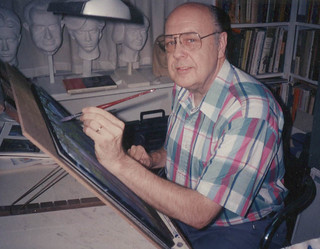 If one spent any time with Chester Martin you learned many things. First was that he was a life-long resident of Chattanooga, Tennessee and graduate of Kirkman Technical High School and the University of Chattanooga. He loved the history of his city and could relate stories of particular events with great enthusiasm. A visitor would often be taken to Lookout Mountain or Chickamauga battlefields and informed of the battlefield plan, the state of the art aquarium, art museum, Medal of Honor Museum, TVA facilities or a game of the double-A Chattanooga Lookouts.
If one spent any time with Chester Martin you learned many things. First was that he was a life-long resident of Chattanooga, Tennessee and graduate of Kirkman Technical High School and the University of Chattanooga. He loved the history of his city and could relate stories of particular events with great enthusiasm. A visitor would often be taken to Lookout Mountain or Chickamauga battlefields and informed of the battlefield plan, the state of the art aquarium, art museum, Medal of Honor Museum, TVA facilities or a game of the double-A Chattanooga Lookouts.
A special treat for me was a visit to the Old train station (now hotel) a ride on the incline plane railroad up to Lookout Mountain, a tour of Rock City
and a visit to the Chattanooga National Cemetery where the Andrew's Raiders monument is a highlight (The early railroads of the area, highlighted by the raid on the General
would be an oft-visited art theme of his).
During his service stateside in the Air Force, he would take his leave in Europe, traveling around with his 8mm camera taking in the sights and vistas. Visitors would often be quizzed on cloud formations and contrails.
His graphic arts education got him jobs as an illustrator, but he was fond of painting in watercolor or oils scenes of old Chattanooga or classic rural hillside cabins. One of the murals done for a local club has been saved and was re-located to the visitor bureau office at the Chattanooga Municipal airport (Lovell Field) (CHA). (I could not confirm if it was still there).
Some of his porcelain works honored local Chattanooga sites. Done in a bi-colored Wedgewood style, the Fireman's fountain was so honored, as is St. Louis Cathedral in New Orleans, done at a time when he was trying to expand his market. Other porcelain works included an early streetcar of the St. Elmo Carline as well as the Nyberg automobile, a locally built car.
In the mid-1960s he entered several contests for U.S. commemorative stamp designs contests and every now and then he entered the national and state waterfowl stamp contests.
When the American Medallic Sculpture Association was founded he was an early member and he began to learn the skills needed to do bas-relief work. He attended the 1984 three-week John Cook Medallic Workshop at Penn State. His work was selected for a F.A.O. medal (1982), a Society of Medalists medal (1980, Snail and Galaxy, SOM 50th Anniversary) and a Brookgreen Gardens Medal (1984) (where a large bronze version of his SOM Snail is on display) and a FIDEM 50th Anniversary medal (1987). He attended the FIDEM congresses in Florence (1983), London (1992) and Budapest (1994) and had medals exhibited at most between 1983 and 2017.
From 1986-1992 Chester was a sculptor/engraver at the U.S. Mint in Philadelphia. He designed the Congressional medals for Andrew Wyeth and General Colin Powell. In the modern commemorative series he did the reverse of the 1992 White House Bicentennial Silver Dollar. Mint list medals include those for the Mint Directors Conference and Yosemite National Park Centennial.
In 1993 he was awarded the American Numismatic Association's Numismatic Art Award for Excellence in Medallic Sculpture.
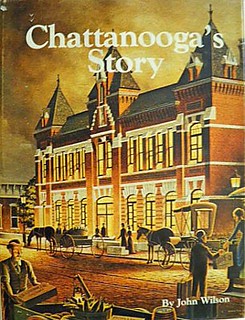 His watercolors had been represented by the Seaside Art Gallery in Nags Head, North Carolina.
His watercolors had been represented by the Seaside Art Gallery in Nags Head, North Carolina.
His medallic works are represented in the collections of the Smithsonian, British Museum, Royal Swedish Coin Cabinet among others.
Since the mid-2010s he had been writing a column for the on-line page The Chattanoogan.com and the Chattanooga Times Free Press and they are available easily via a Google search.
In retirement he experienced some health issues relating to diabetes and some time ago had a partial foot amputation. He died of kidney failure and his plan was to be donated for research to Vanderbilt University's School of Medicine. Future memorial services will be private.
He is survived by his wife Patricia, daughter Sharon and grandchildren Forrest and Ian.
George adds:
"The Eagle Scout portrait was done as he was a local youth and he liked the project he worked on.
"The book jacket cover used one of his paintings of the old Union Depot in Chattanooga.
"Although the female with hair blowing in the wind seems like a nude, as he was living in the bible belt, he would always put a hint of a one-piece bathing suit with the use of a subtle line."
DAVID R. GOTKIN (1944-2022)
Andy Singer passed along this Washington Post death notice for dealer David Gotkin. Thanks. -Editor
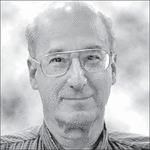 David Gotkin, 77, of Fairfax Virginia, passed away peacefully on March 15, 2022. He was born in Washington, DC on May 21, 1944, to Eleanor and Raymond Gotkin. He is survived by his sons Benjamin and Sean; his ex-wife Christine; and his grandchildren Ryan, Adam, Fionn and Cassidy.David served in the US Army stateside during the Vietnam war in the late 1960's.
David Gotkin, 77, of Fairfax Virginia, passed away peacefully on March 15, 2022. He was born in Washington, DC on May 21, 1944, to Eleanor and Raymond Gotkin. He is survived by his sons Benjamin and Sean; his ex-wife Christine; and his grandchildren Ryan, Adam, Fionn and Cassidy.David served in the US Army stateside during the Vietnam war in the late 1960's.
In January 1975, he decided to start his own business in the field of numismatics. He was highly respected, successful and an expert in his field of dealing rare world coins for over 47 years.
David also served as an usher for over 30 years for the Washington Redskins, Washington Nationals and many concerts at the legendary RFK Stadium. He enjoyed travel, sports, music, comedy, electronics and collecting.
To read the complete article, see:
DAVID GOTKIN
1944 - 2022
(https://www.legacy.com/us/obituaries/washingtonpost/name/david-gotkin-obituary)
THE OFFICIAL REGISTER AND WOMEN IN THE MINT
Newman Numismatic Portal Project Coordinator Len Augsburger provided the following update on the topic of women working at the U.S. Mint. -Editor
More on Women in the Mint
Following up on Jerome Nashorn's insightful comments in the March 20 issue, the Journal of the Franklin Institute for 1855 reported:
I cannot omit a reference to the very excellent remarks of the chief coiner [Franklin Peale] on the employment of females in some of the operations in his department. This, he informed me, had generally excited the surprise of, and been commented upon, by foreigners, who had visited the Mint. His experience, however, had led him to believe, that in places of trust, where no great physical exertion was called for, but where accuracy and strict integrity were of first importance, the moral perceptions of the female, generally strong and of a higher standard than in the man, would qualify her as his substitute, and thus, while opening a new field of labor for the occupation of females, would strengthen their claims to it by the superior accuracy and economy of their work.
Nashorn also referred to the Official Register, a useful list of federal employees. Newman Portal has extracted, from the Official Register, the lists of employees in the Bureau of Engraving and Printing and the Mint from 1816-1959. A quick examination of the Official Register suggests the prohibition against marriage may have been selectively enforced. The 1881 Official Register lists Mrs. E. Cowan in the Coiner's Department, and others with the title Mrs.
Similarly, many married adjusters are listed in the 1891 report. The use of titles is inconsistent – for example, the adjusters have listed titles (Miss
or Mrs.
) in the 1891 report, while the counters in the coin department, among which are many women, are listed only by their first and last names.
Link to the Official Register on Newman Portal:
https://nnp.wustl.edu/library/publisherdetail/536877
To read the earlier E-Sylum article, see:
MORE ON WOMEN AND THE U.S. MINTsac
(https://www.coinbooks.org/v25/esylum_v25n12a09.html)
VIDEO: FATHER, DAUGHTER AT 2021 USMEX SHOW
These are selections from the David Lisot Video Library that feature news and personalities from the world of coin collecting. David has been attending coin conventions since 1972 and began videotaping in 1985. The Newman Numismatic Portal now lists all David's videos on their website at:
https://nnp.wustl.edu/library/multimediadetail/522852
Here's another one from the 2021 USMEX Coin Convention, featuring an interview with collectors Cory and Ali Frampton. -Editor
Father and Daughter Team Enjoy Mexican Numismatics
VIDEO: 5:17.
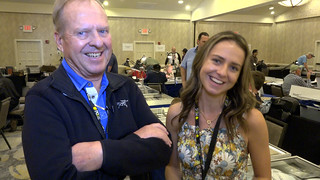 Cory Frampton & Ali Frampton, US Mexican Numismatic Association
Cory Frampton & Ali Frampton, US Mexican Numismatic Association
David Lisot, Interviewer, CoinTelevision.com. October 21-23, 2021.
What a joy when one of your children shares an interest with you! Imagine how delighted the Executive Director of the United States Mexican Numismatic Association is that his daughter has an intrigue with the numismatics of Mexico. Learn the story of how this family developed their fascination of coins and paper money and see examples of actual pieces of history.
David adds:
"More from the annual US Mexican Numismatic Association Convention, a boutique coin convention held in Scottsdale specializing in Mexican and Latin coinage. I can relate to this story of a father/daughter team appreciating numismatics. I have two children of my own both of whom have expressed no interest in the coin hobby whatsoever. Cory and Ali Frampton have a special bond as parent and child embellished by their love of Mexican numismatics. I am sure other numismatic parents will appreciate this video!"
An excerpt of the video is available for viewing on the Coin Television YouTube Channel at:
https://youtu.be/1MluQIUPntM
NOTES FROM E-SYLUM READERS: MARCH 27, 2022
More on Denman Grammar School Medals
Michael Wehner writes:
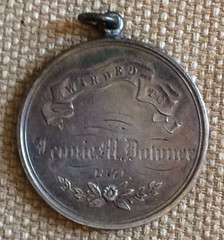 "Ever since I wrote a TAMS Journal article back in 2011 about the medals of James Denman, I have been keeping a census of the awardees of the four types of Denman medals. Adding Jennie Downer makes 56 names of San Francisco grammar school female graduates between 1866 and 1915. Undoubtedly, there are many more. A special thanks to Jerome Nashorn as it is exciting to learn the story of one of these young women.
"The census can be found here:
"Ever since I wrote a TAMS Journal article back in 2011 about the medals of James Denman, I have been keeping a census of the awardees of the four types of Denman medals. Adding Jennie Downer makes 56 names of San Francisco grammar school female graduates between 1866 and 1915. Undoubtedly, there are many more. A special thanks to Jerome Nashorn as it is exciting to learn the story of one of these young women.
"The census can be found here:
https://docs.google.com/spreadsheets/d/
1i4UuDvKO71wgSFfwdCIhRgm_
Pt5Z8366BnZbwm5Trnk/edit?
usp=sharing
"... and my TAMS article, "The Denman Grammar School Medals of San Francisco" by Michael Wehner, TAMS Journal September/October 2011 - Vol. 51, No. 5. pp 131-136 is on the Newman Numismatic Portal at
https://nnp.wustl.edu/library/book/523780?page=9
"
"When I read the article about a medal awarded by the Denman Grammar School I immediately recognized that name. My mother attended James Denman Junior High School (now called Middle School) in the 1940s. It was named for the man hailed as the "Father of San Francisco's Public Schools." Denman (1829-1909) organized the first free, public school in that city in 1851. This is the school later named for him and that presented the award medal. The one my mother attended was of later construction and was located some distance from the original."
Thanks, everyone. -Editor
To read the earlier E-Sylum article, see:
MORE ON WOMEN AND THE U.S. MINT
(https://www.coinbooks.org/v25/esylum_v25n12a09.html)
M C Lilley's Unmarked Tokens
Regarding the Improved Order of Red Men token Michael Wehner discussed,
Heath White writes:
"True, only one listing on TokenCatalog mentions M C Lilley. I would argue VERY FEW companies manufactured more items that are listed on TC than Lilley. Unlike companies such as W & H, Bastian, or MACO, Lilley rarely put their company name on tokens, medals, ribbons, insignia, or badges they manufactured. Lilley shipped small items from their metal plant in white boxes which had their company name on it so if the box was lost so was the connection to Lilley. At some point (1915-1920?) they did start marking some items with their company name, but even then it doesn't seem to have been done very consistently.
"Attached is an image of a pencil rubbing taken from the die that made the IORM Token on TC. I found this in a die inventory book from The C E Ward Company which acquired many of Lilley's dies in 1951. I would love to say I owned this die, but unfortunately I don't. The die was sold to a dealer a couple of years ago and is now owned by someone that most likely has no idea about the provenance of it."
Thanks! -Editor
To read the earlier E-Sylum article, see:
NOTES FROM E-SYLUM READERS: MARCH 20, 2022 : Lilley Improved Order of Red Men Token
(https://www.coinbooks.org/v25/esylum_v25n12a11.html)
Julian Leidman Remembers Jim McGuigan
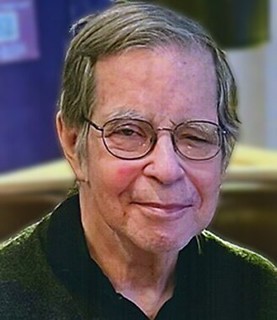 Julian Leidman writes:
Julian Leidman writes:
"I knew Jim for nearly 50 years, meeting him at the annual MSNS show in Dearborn, MI. As has been previously said, he was a gentleman and a fine, fine dealer, who was respected and treasured by many numismatists. Whenever I was unable to attend an auction that I had bids for, he was one of a very few colleagues who I knew could examine the lots and execute the bids for me. We shared many commissions together. For many, many years we were back to back at the annual FUN convention. I will miss him, as will many. Rest in Peace, Jim!"
To read the earlier E-Sylum articles, see:
JAMES R. MCGUIGAN (1944-2022)
(https://www.coinbooks.org/v25/esylum_v25n11a03.html)
NOTES FROM E-SYLUM READERS: MARCH 20, 2022 : More on Jim McGuigan
(https://www.coinbooks.org/v25/esylum_v25n12a11.html)
More on ANS Membership Index Cards
George Cuhaj writes:
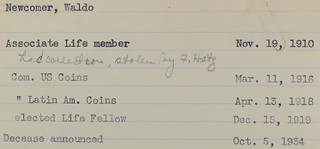 "The membership index cards shown last week may have been created as resource material for the ANS 1958 centennial history by Howard L. Addelson.
"The membership index cards shown last week may have been created as resource material for the ANS 1958 centennial history by Howard L. Addelson.
"If that is the case, they were typed by Rose Mangini - working on the centennial history was one of her first projects at the ANS. She is better known at the long time secretary to the director Leslie A. Elam.
"In later years the secretary's office would have used special buff colored 4x6 or so cards kept in a business file which recorded personal information as well as dues payments, committee appointments, membership class progress and other society activity information.
"That system was in use well into the mid-1980s when various databases began to make their way into the operation of things. Rose retired in the mid-1980s (after '83 before '88)."
ANS Librarian David Hill writes:
"Thanks George!
"I had thought for a long time that they were done for Adelson's book, but some details led me to think otherwise, including the amount of detail in committee appointments and that some seemed to have been updated in real time. The information on them is mostly up until the 1920s, but there are outliers into the 1940s."
To read the earlier E-Sylum article, see:
EARLY ANS MEMBERSHIP RECORDS DIGITIZED
(https://www.coinbooks.org/v25/esylum_v25n12a04.html)
More on Hauling "Jeff Davis Gold & Silver"
Regarding the Civil War veteran questionnaire form he discussed last week,
Chelius Carter writes:
"It is a Union veterans piece...a friend pointed out that what I had read as a southern state abbreviation was New Hampshire. I misread "N H" and couldn't make heads nor tails of his unit designation.
"This makes perfectly good sense for him to be in Savannah, GA in June 1865 - as they occupied the city from December 1864 on. Regardless...this document still takes the "lost Confederate treasury" into a different direction that I have not heard before...that the Yankees got hold of it, or at least some part of it...."
"While driveing Team at Savannah Ga about the first of June 1865 I hauled One load of Jeff Davis gold & silver to the boat."
Thank you for the additional information. Curious tidbit. -Editor
To read the earlier E-Sylum article, see:
HAULING JEFF DAVIS GOLD & SILVER
(https://www.coinbooks.org/v25/esylum_v25n12a08.html)
Book Review: The Winchester Mint
American Numismatic Society Curator Emeritus
R. W. Hoge writes:
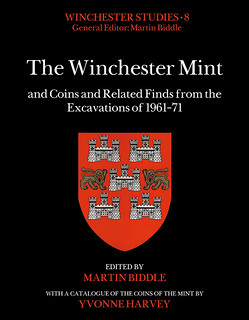 "I recently acquired a copy of the The Winchester Mint and Coins and Related Finds from the Excavations of 1961–71, edited by Martin Biddle. Although I noted that there was a mention of a reprint coming out, and apparently a digital open-access version, there seems never to have appeared an announcement or review or discussion of the original publication of this work (in 2012). To me, this is incredible, because this has to be one of the most prodigious numismatic undertakings and productions of the past ten years at the least. (It was, literally, 50 years in production!)
"I recently acquired a copy of the The Winchester Mint and Coins and Related Finds from the Excavations of 1961–71, edited by Martin Biddle. Although I noted that there was a mention of a reprint coming out, and apparently a digital open-access version, there seems never to have appeared an announcement or review or discussion of the original publication of this work (in 2012). To me, this is incredible, because this has to be one of the most prodigious numismatic undertakings and productions of the past ten years at the least. (It was, literally, 50 years in production!)
"The work contains what I believe must be the greatest presentation of the coinage of a single major Medieval mint that has ever appeared. And the author of this study, Yvonne Harvey (who must have been well-known to many British medieval numismatic authorities), seems to have gone, and passed away, virtually unrecognized. How can this have happened?! I am very curious. The book as a whole really is a gem, and the amount of die-study work that Harvey put into it (without the modern aid of the computer) is astounding!
"Wayne, your own work with The E-Sylum over the years has been incredible, too! I don't know how you are able to pull together so much, so quickly and so well! Thank you always!"
*blush* It's smoke, mirrors, elbow grease and a healthy dose of high-quality submissions from our high-quality readers. So thank you, too.
While checking our archive I discovered that we actually did have an announcement in The E-Sylum in 2012, from my good friend the late Tom Fort. The article is linked below. New books can be easy to miss sometimes, when we have so many of them - there were five new publications announced in that one issue alone (among 30 articles total). -Editor
To read the earlier E-Sylum article, see:
NEW BOOK: THE WINCHESTER MINT
(https://www.coinbooks.org/esylum_v15n19a04.html)
NEW BOOK: THE WINCHESTER MINT REPRINT
(https://www.coinbooks.org/v24/esylum_v24n48a08.html)
THE BOOK BAZARRE
FRONT-FACING VS. PROFILE VIEWS
Wayne Pearson submitted these thoughts on potential new coin designs while discussing the merits of front-facing portraits and profile views. -Editor
Currently, we have a Platinum bullion coin, a dollar coin, and a five cent coin, all three in a front view.
The bullion coin, with the Statue of Liberty design, in a front view looks really nice.
Starting in 1997, it has now reached 25 years, time for a new eagle reverse design. Hopefully, it will be a better eagle design than the ones being used on the gold and silver bullion coins.
The dollar coin starting in 2000, is also nearing the 25 year mark. It also uses a front view. However, when compared to the last four one dollar coins, Morgan, Peace, Eisenhower and Anthony, all done in profile, the Sacagawea design DOESN'T even look like a coin. It looks more like a medal.
And as seen in this picture, the Sacagawea dollar doesn't compare with the profile versions. Before this design was chosen, I supported another Glenna Goodacre profile design.
This design actually looks like a coin and it fits in with the other profile coins. And I believe it to be as nice as the 1913 Indian Head ‘nickel'.
And lest you think I'm picking on the only woman on a coin, I'm not. The Jefferson ‘nickel' of 2006 is also a terrible design. The front view also looks more like a medal. It is quite ugly for a coin.
Looking at our beautiful coins of the past, done in profile, front views of people don't even look like they belong in our coin sets.
A better Jefferson design would be the 1993 Jefferson dollar design.
Below is my rendition of a (new) Jefferson ‘nickel' design using the 1993 design, combined with a version from the 1938 contest, using their neck truncation instead of the giraffe neck on the 1994 version.
I do like the alternate profile designs Wayne suggests, particularly the Goodacre Sacagawea. While the front-facing Jefferson design was new and seemed bold at the time, there are good reasons why coin designers through the ages have preferred profiles. A sculptor could define the reasons more precisely, but my take is that getting the eyes and nose right seems elusive in a front-facing view. It's hard to pull off - they just don't quite look right. -Editor
References:
2022 1 oz Platinum American Eagle Coin
(https://www.usgoldbureau.com/2022-1-oz-platinum-american-eagle-coin)
2000-S Sacagawea Dollar Gem Proof
(https://www.apmex.com/product/5314/2000-s-sacagawea-dollar-gem-proof)
Dollar Coins 1 Morgan, 1 Peace, 1 IKE, 1 Susan B. & 1 Sacagawea
(https://www.mercari.com/us/item/m29527112129/)
Randy'L Teton
(https://www.randylteton.com/about)
Buffalo Nickel Value 1913-38
(http://coinhelp.net/buffalo-nickel-value-images-facts/)
2006-D Jefferson Nickel Gem BU (Brilliant Uncirculated)
(https://www.collectons.com/shop/item/1108/2006-D-Jefferson-Nickel-Gem-BU-Brilliant-Uncirculated)
1993-S $1 Jefferson, DCAM (Proof)
(https://www.pcgs.com/coinfacts/coin/1993-s-1-jefferson-dcam/9689)
http://www.felixschlag.com/
VOCABULARY TERM: IMMERSION FINISH
Here's another entry from Dick Johnson's Encyclopedia of Coin and Medal Terminology. -Editor
Immersion Finish. A medallic patina applied by placing the item completely submerged in a liquid bath. Immersion time is critical, often the longer the item is left in the liquid the deeper or darker will be the color. Immersion finishes are the most common of all patina finishes.
To prepare a medal for an immersion finish – as with most finishes – is to do a very light abrasive blasting, pelting the surface with glass beads or very fine sand. This creates micro size indentations, called craters or cups that accepts the liquid and holds it in the indentations. After exposure to the liquid for a proper time (ranging from a few seconds to several days) the liquid must be washed off to stop the action. Sometimes the medallic item is relieved or highlighted, then almost always lacquered. See patina, finish and finishing.
To read the complete entry on the Newman Numismatic Portal, see:
Immersion Finish
(https://nnp.wustl.edu/library/dictionarydetail/516124)
QUERY: WHO IS BRUCE SMITH?
American Numismatic Biographies author Pete Smith submitted this article on multiple numismatists named Bruce Smith. Thanks. It's taken a lot of work to put this together - can anyone help fill in the gaps? Thanks. -Editor
A project this week was to try to sort out various numismatists named Bruce Smith. I found nine or ten and suspect there may be more.
I will mention one area of confusion. Which Bruce Smith has compiled a book on Missouri Trade Tokens? I thought it was Bruce W. Smith who joined the ANA as member R-78328 in 1974. Then I discovered it was Bruce W. Smith who joined the ANA as member 1212253 in 2004. Perhaps his membership lapsed and he rejoined with a new number.
So, whatever became of the book? Comments suggest it was ready for publication twenty years ago. I am not aware that it has been published.
My notes on Bruce Smith follow. I invite E-Sylum readers to fill in the blanks or add more names.
Smith, Bruce
Author of Coin and Banknote Tricks (1995). The author has written many books on topics unrelated to numismatics.
Smith, Bruce
He joined the ANA from Louisiana in 2006.
Smith, Bruce
Executive vice president of First Diversity Staffing. Partner in Ohio Coin Ltd. from 2014 to 2020 in Springfield, Ohio.
Smith, Bruce David (b. 9/21/1954 d. 7/9/2002)
Born in St, Paul, Minnesota. Married to Valerie Bencivenga, He graduated summa cum laude from the University of Minnesota and earned a Ph.D. from MIT. Consultant and author for Minneapolis Federal Reserve Bank. Instructor at University of Texas at Austin.
Author of Money and Inflation in Colonial Massachusetts
(1984) and Some Colonial Evidence on Two Theories of Money: Maryland and the Carolinas
(1985).
He died at St Mary's Hospital in Rochester, Minnesota.
Smith, Bruce (Edward) (b. 9/6/1947 d. 7/5/2020)
Born in Rexburg, Idaho. He served during the Vietnam War. Married to Mary Alice Edlefsen with two sons, divorced. Married Janean Covington in 1998. Employed with the Idaho Transportation Department.
Bruce studied family history and genealogy and digitized records for the LDS Church.
He joined the ANA from Rexburg, Idaho, in October 1978 as member R-97143. He died at home in Idaho Falls, Idaho.
Smith, Bruce H(oward) (b. 9/12/1952 L2022)
Born in Warren, Pennsylvania. Received BA in history from Heidelberg College in 1974. Married to Nancy. Elementary school (4 th grade) teacher in the Benjamin Logan Local School District for 35 years.
He joined the ANA from Ohio in February 1994. Member of ANS, CONA, CWTS, CTCC, EAC, MCA, NBS and TCS.
Regional vice president for Colonial Coin Collectors Club (C4). Collector of Connecticut coppers by die variety. Researching medalist John Kirk.
Residing outside Zanesfield, Ohio. Previous resident of Chicago and Buffalo, New York.
Smith, Bruce Lee (b. 11/26/1968)
Received M.A. from Wheaton College Graduate School in 1996. Married to an artist.
Senior Portfolio Director with Blanchard and Company 1998 to 2018. Owner of Integrity Asset Management after 2000. Owner of Bruce Lee Smith Fine Art Photography after 2013. With Stack's Bowers in 2018. He joined M. S. Rau Fine Art, Antiquities and Jewels as director of numismatics in 2021.
Resident of Covington, Louisiana.
Smith, Bruce (Thomas) (b. 6/11/1948)
Secretary with Yuma (AZ) Coin Club. Formerly from Chillicothe, Ohio.
Smith, Bruce W(ayne) (b. 1951)
Born in St. Louis. Missouri. Received BA from the University of Missouri St. Louis. Received MA from Harvard. Married to Ruth Ann. He joined the ANA from Hazelwood, Missouri, in March, 1974, as member R-78328.
Specialist in Missouri numismatics.
Assistant editor of World Coin News 1974 to 1977. Employed with A-Z Coins & Stamps in Ft. Wayne, Indiana 1977 to 1987. Editor of The Check List 1978 to 1980. Editor of The Journal of East Asia Numismatics 1994 to 1998. Co-author of Unusual World Coins.
Resident of St, Louis, Hazelwood, Missouri (1973-1974), Iola, Wisconsin (1975-79), Ft. Wayne, Indiana (1979-1981), Stevens Point, Wisconsin (1978), Cambridge, Massachusetts (1994), Sheboygan, Wisconsin (1995-2005).
Smith, Bruce W.
He joined the ANA from Wisconsin in February 2004 as member 1212253. He is compiling a book on Missouri Trade Tokens (unpublished).
Sometimes numismatic research is easy. Usually it's not easy at all. And sometimes difficult problems arise where you least expect them to - who would have thought there could be so many Bruce Smiths? Any help readers can provide would be appreciated. -Editor
DON EVERHART'S CAREER IN COINS, PART 9
With permission, we've been republishing excerpts of former U.S. Mint Sculptor-Engraver Don Everhart series published by CoinWeek beginning in April 2018. Here's the final segment. What great experiences! Thanks for sharing these with the hobby. -Editor
Barack Obama (2009-2017)
During almost the entire Obama Administration, the engravers did not hear any news about a potential Presidential Medal. It is a tradition that goes all the way back to George Washington; would this be a gap in the succession of Presidential Medals?
Finally, in late 2015 we got approval from The White House to proceed with designs for President Obama's first and second administrations. The two medals were to be struck with a total of four sides to be designed, considering obverses and reverses.
My obverse was a traditional left facing profile of Barack Obama with the words Barack Obama
in an arc around the rim of the medal.
The two reverse designs were the same basic format as each other, featuring a 50-star border with either an image of The White House or the Presidential Seal, along with his signature and the date of each inauguration.
I worked hard on these designs and the many others I submitted that weren't chosen. I worked weekends in addition to my regular hours at the Philadelphia Mint. I even gave up a multi-day bike trip one weekend with my cycling buddies to work on these medal designs! If you know me, then you know it's serious when I decide to work rather than ride with my friends. We sent the designs over to the White House and waited to hear back.
One afternoon I was driving home from work and my phone rang. It was April Stafford, head of the Program Development Department at headquarters in Washington, DC. She told me that the White House had decided and selected my second-term obverse and both of my first- and second-term reverses! It's hard to concentrate on driving when you get news like this. Luckily for me I was only a mile away from home.
The first-term obverse design was beautifully drawn by Richard Masters, a long time Artistic Infusion Program artist. Phebe Hempill sculpted a stunning portrait of the president, looking upward and to the right. My traditional left-facing profile of President Obama was the choice for the second term.
It was a challenge to portray him a bit more aged than he was in the first term (my reference showed him younger), but I managed to capture him looking appropriately older. How do you convey graying hair in a sculpture?
Rhett Jeppson, Acting Director of the United States Mint at the time, relayed to me that we were to be at the White House on January 17, 2016 to meet the president in the Oval Office to present to him his medals.
Rhett, his Chief of Staff Elisa Basnight, and his aide Justin Gradek–together with Phebe and myself–arrived at the White House on a rainy and gloomy Tuesday afternoon. After waiting outside the White House grounds in a pouring rain, followed by a long walk, we arrived at the West Wing entrance, guarded by a most decorated Marine. We were soaked by the time we finally got indoors. But no one was complaining.
We waited first in a receiving room for about 40 minutes, making small talk and brimming with anticipation. Finally an aide came in and told us it was time to meet the president. She took us to a small anteroom adjacent to the Oval Office where we waited for about 10 more minutes. Suddenly, the door swung open and President Obama himself gave us a hearty C'mon in!
.
We filed in with handshakes from the Commander-in-Chief one at a time. Also in attendance was the Secretary of the Treasury, Jack Lew, and Sarah Bloom Raskin, the Deputy Secretary of the Treasury.
I was impressed by how the man held himself, with grace and intelligence. He was obviously very fit. He was quite a bit taller than I am and I looked up when we were shaking hands. He had a real presence about him.
Phebe and I gave the president details on the process and production of his medals. He said several times how much he liked them. We posed for several photos by White House Photographer Pete Souza, then left after a visit of about 20 minutes or so.
It had stopped raining by the time we left the White House and the five of us went our separate ways. But I am sure none of us will ever forget that day!
Apollo 11
In 2007 Congress authorized Public Law 111-44 under the New Frontier Congressional Gold Medal Act to recognize the 40th anniversary of the first human landing on the moon by the crew of Apollo 11. We began designs for this CGM sometime afterwards, with the goal of presenting the medal in a ceremony at the Capitol Rotunda in November of 2011.
The medals were to honor the three Apollo 11 astronauts: Neil Armstrong, Buzz Aldrin and Michael Collins. Also, Mercury astronaut John Glenn was to be honored by the gold medal.
Mint engravers, along with the Artistic Infusion Program artists, were asked to prepare designs to commemorate the event.
Both sides of the medal were designed by Joel Iskowitz, with portraits of the three Apollo astronauts and John Glenn of the Mercury missions on the obverse. The reverse depicted the Apollo 11 capsule in orbit and the lunar LEM in the process of landing on the lunar surface. Phebe Hempill sculpted the obverse and I sculpted the reverse design.
Phebe, Joel and I were all invited to the ceremony at the Capitol Rotunda in Washington on Wednesday, November 16, 2011. It was a beautiful ceremony, with speeches by President Bush, Speaker of the House John Boehner, Mitch McConnell, Harry Reid, Nancy Pelosi and Neil Armstrong. The event, like most other CGM ceremonies, lasted about an hour.
After the chaplin of the Capitol finished the event with a prayer, the attendees began filing out of the Rotunda. The three of us were beginning to make our exit when we walked past a roped-off area with a Capitol aide standing there directing people out of the building. As we were walking past her she asked us if we were attending the post-ceremony reception. We didn't know anything about a reception but I looked around to Phebe and Joel and managed to reply with a somewhat unconvincing Yes
. She then ushered us past the barriers toward the room where the reception was being held. I am not sure to this day if she knew that we were the artists involved in the creation of the medal.
The room was bustling with groups of people chatting, drinking and eating hors d'oeuvre. I spotted several of the astronauts immediately. Joel, Phebe and I soon found ourselves in conversations with several of them. I met John Glenn, Neil Armstrong, Michael Collins, Gene Cernan and Tom Stafford. What I remember most was shaking hands with Neil Armstrong and John Glenn and thinking, I can't believe I am actually meeting these American heroes!
On July 20, 1969, as a college student on a warm summer night, I sat with my parents, eyes glued to a small black-and-white TV as the Apollo Lunar module descended and landed on the moon's surface. A few hours later we watched as Neil Armstrong stepped off the ladder and left man's first footprints on another world. In my wildest dreams I never imagined that some day in the future, I would be working as a sculptor for the United States Mint and shaking hands with the first man to step on the moon!
Five years after that momentous event, I would walk into a gallery in Philadelphia with my student portfolio with the rather humble goal of securing a one-man gallery show and my life and career path would change completely.
To read the complete original article, see:
Don Everhart: My Career in Coins, Part 3 – Historic Figures & Heads of State
(https://coinweek.com/us-mint-news/don-everhart-my-career-in-coins-part-3-historic-figures-heads-of-state/)
To read the earlier E-Sylum article, see:
Don Everhart's Career in Coins, Part 8
(https://www.coinbooks.org/v25/esylum_v25n12a16.html)
ARCHIVES INTERNATIONAL AUCTION 75
Here is the announcement for the March 30-31, 2022 sale by Archives International Auctions. Great material! -Editor
ARCHIVES INTERNATIONAL AUCTIONS OFFERS HISTORIC CHINESE & WORLD BANKNOTE & SCRIPOPHILY AUCTION OVER 2 DAYS ON MARCH 30 & 31, 2022.
The auction will be held by Archives International Auctions at their offices in River Edge, N.J.
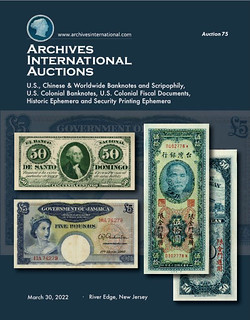 The March 30th and 31st, 2022 auction by Archives International Auctions
will consist of over 1,320 lots of rare and desirable U.S., Chinese & World Banknotes, Scripophily, U.S. Colonial Fiscal Documents, Historic Financial Ephemera, and Security Printing Ephemera over 2 days. The first day will include 673 lots offered in a Live Gallery, Live Internet and Absentee auction with a second day, on March 31st offering 654 lots in a timed auction. The Day 1 Auction is highlighted by 95 lots of rare and desirable Chinese banknotes, a majority of the notes are from old-time collections and estates that are being offered for the first time.
The March 30th and 31st, 2022 auction by Archives International Auctions
will consist of over 1,320 lots of rare and desirable U.S., Chinese & World Banknotes, Scripophily, U.S. Colonial Fiscal Documents, Historic Financial Ephemera, and Security Printing Ephemera over 2 days. The first day will include 673 lots offered in a Live Gallery, Live Internet and Absentee auction with a second day, on March 31st offering 654 lots in a timed auction. The Day 1 Auction is highlighted by 95 lots of rare and desirable Chinese banknotes, a majority of the notes are from old-time collections and estates that are being offered for the first time.
We are privileged to offer another exciting and desirable group of rare banknotes, ephemera and scripophily, including many examples we have never had the pleasure to offer previously, as well as many of the highest graded notes for those varieties
, stated Dr. Robert Schwartz, President of Archives International Auctions. Included in the upcoming auction are rare and desirable numismatic items that will enhance the collections of every level of collector and dealer
.
The March 30th Live Gallery Session begins with 363 lots of Chinese & World banknotes, including many varieties that have not been offered previously at auction as well as a significant number of highest graded and finest known examples for those issues. A few of the many highlights include an 1870, Dominican Republic, Banco Nacional de Santo Domingo, 1870, 50 Centavos Proof banknote rarity by ABNC; a ND (1942) Government of Fiji, 1 Pound Issued banknote overprinted on a New Zealand P-155 Issued banknote, and it is also one of the highest graded for this desirable issue; a Great Britain, Bank of England, ND (1934-39) 1 Pound issued note, the highest graded example known, with the overprint Withdrawn from Circulation September 18th, 1941
is offered;
Israel is represented by 4 high grade lots of notes including the only 1998, Bank of Israel, 50 New Sheqalim note in perfect Superb Gem Uncirculated 70 EPQ*
condition out of 63 notes previously graded in the PMG census; an amazing 1960, Government of Jamaica, 5 Pounds Issued Banknote rarity; Singapore is represented by a spectacular 1977, Board of Commissioners of Currency, $50 banknote which is the highest graded example offered at auction; additionally, hundreds of other outstanding world notes are being offered in the auction. In addition, there are 20 lots of Chinese scripophily and Fiscal documents being offered.
The U.S. banknote section of the auction includes 10 lots of U.S. Colonial and Revolutionary period fiscal documents from a new find highlighted by a 1773 Colonial Bill of Exchange from the Principio Company located in the Colony of Maryland, for the account of the Kingsbury Furnace. Augustine Washington, father of George Washington was one of the partners in the company. An amazing early Colonial 1729 Land Deed from Albany, New York Province that is signed by Philip Livingston.
Also included are 80 lots of rare and desirable banknotes, historic ephemera, security printing ephemera, and Revenue Imprinted Checks and Drafts by the American Bank Note Company in addition to many interesting items seldom seen at auction. Some of the many highlights include a signed U.S. Distillery Warehouse I.R. Stamp signed by William H. Taft in 1878 when he was a tax collector; an uncut sheet of 45 De La Rue Giori S.A. Specimen Advertising Notes; a St. Louis Bank Note Company I/C Bond used in the transition when acquired by Western BNC; 14 lots of U.S. I.R. Revenue Imprinted checks and drafts including a number of rare revenue imprinted proofs from the ABN Archives.
Also included is a 1870, U.S. Navy Bill of Exchange that was issued Callao, Peru and printed by ABNC as well as many other interesting fiscal documents. This section ends with 17 lots of Philatelic Souvenir cards with Intaglio printed proof stamps from South American Countries celebrating the 1992 Columbian Stamp Exhibition printed and issued by ABNC.
The First Day of the auction ends with 218 lots of U.S. and World Scripophily with many desirable and rare items offered. The 654 lots offered during the Day 2, Timed sale, includes 148 lots of World Banknotes including many group lots; over 60 lots of U.S. Banknotes, Historic Ephemera, Security Printing Ephemera, and U.S. revenue imprinted checks and drafts; and ending with a large and attractive section of over 440 lots of U.S. and World Scripophily covering every topic from banking, mining, railroads, World and many other topics.
Previews will be limited and by appointment only and we will be observing strict safety precautions including the wearing of masks and observing social distancing to protect our team as well as our guests. We will do our best to accommodate anyone who desires additional information and photographs. For questions, please call 201-944-4800 or email info@archivesinternational.com.
The online catalog for the 2-day auction is on Archives International Auctions' website and can be viewed via the Archives International live bidding platform for Live and Absentee online bidding for Day 1, March 30th and the Timed Auction on Day 2, March 31st . The auction is also available for viewing on a live linked Day 1 Virtual Catalog and Day 2 Virtual Catalog or also as a downloadable Day 1 PDF or Day 2 PDF on their website. To pre-register for Live Internet Bidding, log on to the Archives International Auctions website, at www.ArchivesInternational.com.
Archives International is now working on their Spring and Summer 2022 auctions and are seeking quality consignments for future auctions or outright purchase including U.S. and worldwide banknotes, coins, stocks, bonds, stamps, postal history, historic ephemera, and autographs. To sell or consign one piece or an entire collection, please call AIA at (201) 944-4800; or email them at info@archivesinternational.com
You may also write to Archives International Auctions, at 1060 Main Street, River Edge, NJ 07661, U.S.A. To learn more about Archives International Auctions and the 2-day auction planned for March 30 & 31, 2022 auction, log on to www.ArchivesInternational.com.
THE MIKE BALLERINI COLLECTION
The Roma Numismatics Auction XXIV sale closes Monday March 28th. Here are some highlights from the company's recent email release. -Editor
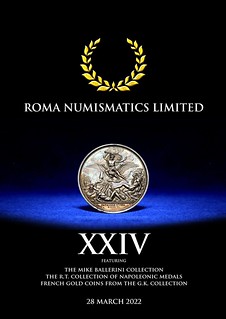 This comprehensive collection of the coinage of Tuscany, assembled by Mike Ballerini of Chicago, covers the period from the first Grand Duke Cosimo I de Medici to the abdication the last Grand Duke Leopoldo II of Lorraine in 1859. Ballerini's family originally came from Tuscany and accounts for his passion for collecting coins from this area.
This comprehensive collection of the coinage of Tuscany, assembled by Mike Ballerini of Chicago, covers the period from the first Grand Duke Cosimo I de Medici to the abdication the last Grand Duke Leopoldo II of Lorraine in 1859. Ballerini's family originally came from Tuscany and accounts for his passion for collecting coins from this area.
Noteworthy pieces from this collection include an extremely rare gold ruspone da 3 zecchini in near mint state condition, struck under the provisional government in Tuscany in 1859, a gold 80 fiorini coin of Leopold II di Lorena in the same state of preservation and an extremely rare francescone da 10 paoli of Francesco Stefano di Lorena published in Pucci, Le Monete della Zecca di Firenze.
A number of rarities can also be found in this collection. A unique francescone da 10 Paoli of Pietro Leopoldo I di Lorena published in Pucci, Le Monete della Zecca di Firenze and an extremely rare gold zecchino of Ferdinando III di Lorena in mint state condition sit alongside an equally rare fiorino of Leopold II di Lorena and a unique francescone da 10 Paoli of Ludovico I di Borbone from the Kingdom of Etruria.
Italian States, Etruria (Kingdom). Ludovico I di Borbone AR Francescone da 10 Paoli. Firenze (Florence) mint, 1802. Giovanni Fabbroni, moneyer; Luigi Siries, die engraver. LUDOVICUS I • D • G • HISP • INF • REX ETRURIAE & •, head to right; LS monogram • hammer below / VIDEANT PAUPERES ET LAETENTUR •, crowned arms superimposed on cross of St. Stephen and collar of the Order of the Golden Fleece; PISIS ? date below. Pucci 12 (this coin, struck 1808-1813); MIR -; Pagani -; Gigante -; for type cf. Davenport 150. 27.14g, 43mm, 6h.
Good Very Fine. Unique.
To read the complete lot description, see:
Italian States, Etruria (Kingdom). Ludovico I di Borbone AR Francescone da 10 Paoli.
(https://www.romanumismatics.com/281-lot-1383-italian-states-etruria-kingdom-ludovico-i-di-borbone-ar-francescone-da-10-paoli?auction_id=182&view=lot_detail)
Italian States, Toscana (Tuscany, Grand Duchy). Leopold II di Lorena AR Fiorino. Firenze (Florence) mint, 1842. Dominico Fiaschi, moneyer; Giuseppe Nideröst, die engraver. LEOP • II • D • G • P • R • H • ET B • A • A • M • D • ETR •, head to right; G. N. and flask below / QUATTRINI CENTO. date., Florentine lily; FIORINO below. Pucci 7; MIR 452/6; CNI 74; Pagani p. 250 note; Gigante 35 (cites three known examples). 6.82g, 25mm, 6h.
Good Very Fine. Extremely Rare.
To read the complete lot description, see:
Italian States, Toscana (Tuscany, Grand Duchy). Leopold II di Lorena AR Fiorino.
(https://www.romanumismatics.com/281-lot-1611-italian-states-toscana-tuscany-grand-duchy-leopold-ii-di-lorena-ar-fiorino?auction_id=182&view=lot_detail)
Italian States, Toscana (Tuscany, Grand Duchy). Ferdinando III di Lorena AV Zecchino. Firenze (Florence) mint, 1799. Francesco Grobert, moneyer. FERDINANDVS • III • D • G • A • A • M • D • ETR •, Florentine lily; unicorn below / • S • IOANNES • BAPTISTA •, John the Baptist seated facing slightly to left; date below. Pucci 162; MIR 403/5; Gigante 16; Friedberg - cf. 337; C 38. 3.48g, 23mm, 6h.
Mint State; weakly struck. Extremely Rare.
To read the complete lot description, see:
Italian States, Toscana (Tuscany, Grand Duchy). Ferdinando III di Lorena AV Zecchino.
(https://www.romanumismatics.com/281-lot-1571-italian-states-toscana-tuscany-grand-duchy-ferdinando-iii-di-lorena-av-zecchino?auction_id=182&view=lot_detail)
Italian States, Toscana (Tuscany, Grand Duchy). Leopold II di Lorena AV 80 Fiorini. Firenze (Florence) mint, 1827. Cosimo Ridolfi, moneyer; Giuseppe Nideröst, die engraver. LEOPOLDVS II • D • G • P • I • A • P • R • H • ET B • A • A • M • MAGN • DVX • ETR •, Florentine lily; N • heraldic hills below / SVSCEPTOR NOSTER DEVS, crowned arms of Lorraine, Austria and Tuscany, superimposed on cross of St. Stephen with collar of the Order of the Golden Fleece, two crossed flags behind; K 1/24 and date below. Edge inscription: ? OTTANTA FIORINI ? 200 PAOLI. Pucci 202; MIR 443/1; Pagani 91; Gigante 1; Friedberg 343. 32.73g, 31mm, 6h.
To read the complete lot description, see:
Italian States, Toscana (Tuscany, Grand Duchy). Leopold II di Lorena AV 80 Fiorini.
(https://www.romanumismatics.com/281-lot-1597-italian-states-toscana-tuscany-grand-duchy-leopold-ii-di-lorena-av-80-fiorini?auction_id=182&view=lot_detail)
Italian States, Toscana (Tuscany, Grand Duchy). Francesco Stefano di Lorena AR Francescone da 10 Paoli. Fourth Series. Firenze (Florence) mint, 1748. Carlo La Garde, moneyer. • FRANCISCVS • D • G • R • I • S • A • G • HIER • REX • LOTH • BAR • M • D • ETR •, draped and cuirassed bust to right; lion head on shoulder strap; stork below / • IN • TE • DOMINE SPERAVI •, crowned and nimbate double-headed imperial eagle with arms; PISIS and MDCCXLVIII below. Pucci 13 (this coin); MIR 363; CNI 42; Galeotti XV; Davenport 1506. 27.08g, 41mm, 6h.
To read the complete lot description, see:
Italian States, Toscana (Tuscany, Grand Duchy). Francesco Stefano di Lorena AR Francescone da 10 Paoli.
(https://www.romanumismatics.com/281-lot-1461-italian-states-toscana-tuscany-grand-duchy-francesco-stefano-di-lorena-ar-francescone-da-10-paoli?auction_id=182&view=lot_detail)
Italian States, Toscana (Tuscany, Grand Duchy). Pietro Leopoldo I di Lorena AR Francescone da 10 Paoli. Firenze (Florence) mint, 1766. Antonio Fabbrini, moneyer. PETRVS LEOPOLDVS D ? G ? P ? R ? H ? ET ? B ? A ? A ? M ? D ? ETRVR ?, cuirassed bust to left; crossed pikes below / [DIRIGE] DOMINE GRESSVS MEOS, crowned arms, collar of the Order of the Golden Fleece below, all superimposed on cross of St. Stephen; PISIS and date below. Pucci 22 (this coin); MIR -; CNI -; Galeotti -; cf. Davenport 1511. 26.88g, 42mm, 6h.
To read the complete lot description, see:
Italian States, Toscana (Tuscany, Grand Duchy). Pietro Leopoldo I di Lorena AR Francescone da 10 Paoli.
(https://www.romanumismatics.com/281-lot-1480-italian-states-toscana-tuscany-grand-duchy-pietro-leopoldo-i-di-lorena-ar-francescone-da-10-paoli?auction_id=182&view=lot_detail)
For more information, see:
https://issuu.com/roma_numismatics/docs/full_web_xxiv/1?ff
https://www.romanumismatics.com/auction-xxiv/2022-03-28
NUMISMATIC NUGGETS: MARCH 27, 2022
Here's a selection of interesting or unusual items I came across in the marketplace this week. Tell us what you think of some of these. -Editor
CEYLON: AE token, ND (1881), Prid-96, Lowsley-35, George Steuart & Co. Wekande Mills coffee token, featuring two women at work; one filling a sack inscribed GS&C, a superb quality example! PCGS graded MS65 RB. This token were issued in 1881 for the firm of George Steuart & Co. merchants, bankers, estate and commission agents, which was started in 1835. This type token was designed by the manager, Mr Charles Hendry and circulated at the value of 19 cents at the time. This was probably the last Coffee token issued and the only token recorded that bear inscriptions in native scripts, although neither are correct, in Sinhala and Tamil.
CEYLON: AE token, ND (1881), PCGS MS65 RB This one is from the Stephen Album Internet Auction 15, closing April 11. -Editor
To read the complete lot description, see:
(https://www.sarc.auction/CEYLON-AE-token-ND-1881-PCGS-MS65-RB_i44676597)
PAN PAC Unique U.S. design and denomination combo makes this a very popular issue. Satiny frost is completely original which earns it a plus and a cac sticker!
I've always been partial to this Pan-Pac quarter eagle design. Great forward-looking eagle, and what's not to love about the hippocampus on the obverse? Found in the stock of Harry Laibstain Rare Coins. -Editor
To read the complete lot description, see:
1915-S $2.50 PANAMA-PACIFIC PAN PAC PCGS MS65+
(http://hlrc.com/Inventory/CoinViewer?id=870553065&c=23)
GERMANY: Third Reich, AR 5 mark, 1933-A, KM-80, J-353, 450th Anniversary of Martin Luther's Birth, a wonderful mint state example! PCGS graded MS64.
I also enjoy the Gothic lettering style of the pre-WWII German issues. This one is also from the Stephen Album Internet Auction 15. -Editor
To read the complete lot description, see:
GERMANY: AR 5 mark, 1933-A, PCGS MS64
(https://www.sarc.auction/GERMANY-AR-5-mark-1933-A-PCGS-MS64_i44676703)
Paul Revere Sesquicentennial Medal Pamphlet
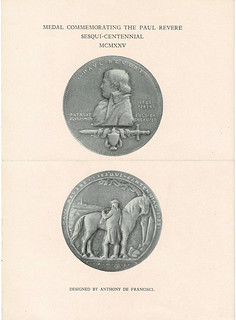 Octavo, 8 inches high by 5-3/4 inches wide. Softcover, a 4-page circular titled with illustrations of the medal in black & white on the cover page. The brochure is folded in half horizontally and the date "6 April 1925" is penciled in an early hand at the end of the last paragraph. Very good. RARE. Issued to commemorate the 150th anniversary of Paul Revere's historic ride, the "Medal Commemorating the Paul Revere Sesqui-Centennial" designed by Anthony de Francisci was surrounded by controversy.
Octavo, 8 inches high by 5-3/4 inches wide. Softcover, a 4-page circular titled with illustrations of the medal in black & white on the cover page. The brochure is folded in half horizontally and the date "6 April 1925" is penciled in an early hand at the end of the last paragraph. Very good. RARE. Issued to commemorate the 150th anniversary of Paul Revere's historic ride, the "Medal Commemorating the Paul Revere Sesqui-Centennial" designed by Anthony de Francisci was surrounded by controversy.
Issued after J. Sanford Saltus' death, sales of the medal were disappointing. Having been unable to obtain use of Copley's famous portrait, the images on the medal depicted Revere in his advanced years. Although Revere was only standing next to his horse on the verso, awaiting his signal, it led to criticism as he appeared ready to mount his horse from the wrong side.
There is also question as to whether the medal was cast or struck. According to the circular at hand, "At his [Francisci's] suggestion, a radical departure in the form of our medal was agreed upon - the rounded edge - an element which contributes in no small degree to the attractiveness of the result.
It is also of interest that the reverse was first modeled in the exact size of the medal itself. It was then enlarged and again reduced after having been retouched, this course having been taken to eliminate the pantographic effect of the reducing machine. The obverse was modeled on a scale of only three diameters." [Quoted from the last page].
Interesting numismatic ephemera. Alas, it has already been sold (and not to me - I discovered this too late). -Editor
To read the complete item description, see:
MEDAL COMMEMORATING THE PAUL REVERE SESQUI-CENTENNIAL MCMXXV. DESIGNED BY ANTHONY DE FRANCISCI.
(https://www.abebooks.com/servlet/BookDetailsPL?bi=31145833160)
THE WORLD'S FIRST MONEY: COWRIE SHELLS
Ted Puls shared a copy of the 13 page summary of the talk he gave to the International Primitive Money Society (IPMS) at the ANA show in Colorado Springs this month. Here's an excerpt. For an electronic copy of the complete paper, contact Ted at tedkate@comcast.net . -Editor
or
My Money is Older than Your Money
The oldest money is the humble cowrie. In China, archeologic finds suggest their use as a durable form of storing value. Cowrie experts report that the earliest use of cowrie for money was ca. 2000 B.C. These small shells sometimes are stored in rare and beautiful bronze vessels made for this special use. This practice suggests the high value placed on these shells.(1) The earliest inscription discussing monetary use dates from the time of transition from the Shang Dynasty into the Zhou dynasty ca. 1100 B.C. (2) Bronze vessels of this era often had inscriptions to honor ancestors and report the faithfulness of the person ordering the vessel to the ancestor. One added how much he paid for the vessel in the honorific. The value paid was 120 strings of cowries for the vessel. The string
at this time was apparently 10 shells on one string. If this accounting is accurate, it suggests that a pretty high value was placed on these shells.
Cowrie shells are not found in the interior of China. The center of culture at this time was far inland. Shells exist around China's sea shore not many are found. The known source for goodly numbers of early cowrie shells was Zanzibar during historic times (Eurocentric point of view) and as trade increased the smaller Maldive Island cowries were used which helped shipping costs. This far away source for cowrie made them rare as well as durable enhancing their usefulness as money. Even if some cowrie came from China's coast there was long distance shipping. This early use of large numbers of cowrie suggests the existence of a significant long distance trade interaction from East Africa, the Indian Ocean or other locations. North central China is a very long way from any cowrie source. I don't know if the cowries arrived in China via land trade routes or by sea trade from Africa or the Indian Ocean. Either seems to be remarkable for the time. I also note that Chinese Shield money or chuan
from this era, seem to resemble designs on Scandinavian large button like items from mid-first millennia B.C. times. Additionally, I wonder if, while the Israelites were wandering around the desert in biblical times, the Viking's ancestors were wandering around Russia and China, trading.
Once traded into China, the cowries were of two species. The cowrie called Cyprea moneta were even named for their use as money. Another species Cyprea annulare were also mixed in the money supply. The moneta
usually have one side with wide shoulders and the other with more rounded smooth edge resulting in an asymmetric diamond shape. The annulare
are named for the yellow ring on the shell back. These seem to be more symmetric oval shaped. They seem to be generally smaller in size too. That these two species were used and even mixed together in hoards seem to have been noted by moneyers. Carved imitation cowries used later often have the diamond shape or the oval shape continued in the carved reproductions. Later times in China history, small differences in standard coin designs were used to denote a coins' mint or the date of the coin. The two types could have a meaning for the differences of similar cowrie carvings too. I propose that it is possible that the paired cowrie styles could also have more cosmic symbolism as in representing the later concept of yin and yang symbolizing balance in Chinese cosmology.
Both types of shells were uses in two styles in Ancient China. Some cowries were used as plain intact shell. Some cowries were shaved to cut off the rounded back apparently to allow easier or more compact stringing. Maybe the uncarved cowries were stored in a vessel rather than stringing. Some cowries are found with a green tint (both shaved and unshaved types) which is thought to be from long storage in bronze vessels. These green jade
cowrie are considered to have an added cachet as a special kind of cowrie today. I have noted blackened cowries exist both shaved and intact types. I suspect that they were buried in soils with high manganese or iron or somehow treated to get this black color. The usual is for the cowries to be white.
For more information on the International Primitive Money Society, see:
https://www.facebook.com/internationalprimitivemoneysociety/
TO WATCH A FORTUNE DISAPPEAR
Bob Van Ryzin published a great amateur Indiana Jones story in
Numismatic News, including excerpts from an earlier article, To Watch a Fortune Disappear,
by John E. M. Moore in the May 1963 issue of Coins. You can probably guess where this is headed, but be sure to read the complete article online for the full context.
-Editor
A genuine silver tetradrachm of Alexander III the Great. (Images courtesy Heritage Auctions.)
When we camped near the ruins of the old city of Taxila in Northern Pakistan, I went off in the rays of the evening sun to seek my fortune in the dust of the ancient marketplace. Darkness came too quickly, and I realized that I would have to recruit my companions if I was to find anything before we went on to India.
The next day at sun-up – hunger always roused us at dawn – all four of us clambered up to Taxila and began sifting through the grayish dust. It wasn't long before we were joined by wide-eyed children from the nearby village and even some adults. We flattered ourselves that we were curiosities, explorers in a place where white faces were rarely seen.
We explained by elaborate signs – and the few coins in our pockets – what we were searching for, and the children joined in enthusiastically, tossing dust and pebbles in the air til we were all in a dry, dirty, fog.
After a longish nap we all strode off again, determined to find the coins we knew must be in the ruins. This time I was barely in the city when I saw one, only half-hidden by a rock. As I picked it up the same shiver of delight I had felt when I fingered the old shilling came over me. The coin was round and battered, the imprint almost worn away but Paneis, the Greek in the group, assured me it must be a coin of Alexander's time.
Before we quit that night I had four more metal bits in my pocket. I hadn't found these myself – some men from the village had wandered up and offered them for what seemed a ridiculously low price for such treasures.
I was sure they were genuine, for they were very nearly identical to my own find. The other three bought as well, and we went to bed full of goats' cheese and plans for expensive country houses.
All through the rest of the trip, as the food and heat got worse, I lived with the dream of great wealth these five small coins would bring me and I grew impatient for the day when would stride into the British Museum and casually toss them on a shelf and hear the gasp of amazement.
To read the complete article, see:
Presumed Fortune Found and Lost
(https://www.numismaticnews.net/world-coins/presumed-fortune-found-and-lost)
EMPIRE COIN CO. 1792 HALF DISME
Here's an excerpt from the Stack's Bowers lot description for a 1792 Half Disme offered in their Spring 2022 Auction. Nice coin with a provenance back to the Empire Coin Co. in 1965. -Editor
Although 1,500 pieces is generally regarded as the entire mintage for this issue, research published by Pete Smith, Dr. Joel Orosz and Leonard Augsburger in their excellent reference 1792: Birth of a Nation's Coinage (2017) confirms a second striking period in October of 1792. The authors believe that the 1,500 coins from the July strike were made on Harper's press while the October striking utilized the Mint press. A third striking period is also discussed, the dies having been removed from the press after the second striking period to create an interruption in coinage. Exactly how much time elapsed between the second and third striking periods is unknown.
The off center strike of this coin and Die State 5 attribution confirm it as one of the later impressions from the second striking period in October 1792. The Smith-Orosz-Augsburger study concluded that this die state accounts for only 2.4% of 1792 half dismes extant. As with their more widely recognized counterparts from the first striking period, these later pieces were also widely distributed in circulation, as evidenced by the fact that most survivors irrespective of striking period or die state are in low grades and often damaged. Indeed, many have been found throughout the Eastern Seaboard, including heavily worn examples found in New Jersey as well as Washington's and Jefferson's home state of Virginia.
Ever since the very beginnings of American numismatics, the 1792 half dismes with their direct connections to the nation's Founding Fathers have been among the most coveted of all federally issued coins regardless of condition. Steeped in history, this superior About Uncirculated example of one of the most significant American issues would make an impressive addition to any advanced collection.
This lot includes the original invoice for this coin's purchase from Empire Coin Company, Inc. (Q. David Bowers and James F. Ruddy) dated October 8, 1965. The purchaser was a Mr. Volk, who paid $1,275 at that time. A typed note signed by Q. David Bowers and addressed to Mr. Volk is included as part of the invoice.
To read the complete lot description, see:
3029 1792 Half Disme. LM-1, Judd-7, Pollock-7, the only known dies. Rarity-3. AU-50 (PCGS).
(https://auctions.stacksbowers.com/lots/view/3-VJELZ/1792-half-disme-lm-1-judd-7-pollock-7-the-only-known-dies-rarity-3-au-50-pcgs)
1973 EISENHOWER DOLLARS
An article on the PCGS site by Joshua McMorrow-Hernandez examines the 1973 Ike dollar. -Editor
The Eisenhower Dollar was released in 1971 and became the first circulating dollar coin officially issued by the United States since 1935. Some of the impetus in getting the Eisenhower Dollar rolling was to honor Dwight D. Eisenhower, a highly respected World War II general who went on to serve as the nation's president from 1953 through 1961. Eisenhower died in 1969 at the age of 78, and many in Congress felt it would be a fitting honor to place his likeness on a coin just as the nation did with President John F. Kennedy in the months after his assassination in November 1963.
The Eisenhower Dollar entered circulation in 1971 with strong enthusiasm from the numismatic community, but the general public was less than enthralled by the new coins. Most American people kept using their folding $1 bills, and while 116,386,424 were cumulatively struck for circulation at the Philadelphia and Denver Mints in 1971 and 168,438,511 more in 1972, most of these coins ended up finding life in the Nevada casino circuit, where they were widely used as slot machine prizes and served a role as veritable poker chips.
The powers that be in the U.S. Treasury and U.S. Mint did not see a dire need to produce another 100+ million in 1973 for circulation when it was already bearing out that the coins had gained little traction as circulating coinage. So, U.S. Mint officials restricted the production of 1973 Eisenhower Dollars to numismatic sets only, with the business-strike specimens from the Philadelphia and Denver Mints devoted solely to 1973 United States Mint Uncirculated Sets. All told, the U.S. Mint produced 2,000,056 strikes in Philly and 2,000,000 at the Denver facility. However, only 1,769,258 of each were distributed in Mint Sets, leaving the balances to endure their fates at the smelter.
I was a budding collector in those days, ordering various products from the U.S. Mint, including the "Blue Ikes", named for the color of the envelope the coins arrived in. -Editor
To read the complete article, see:
Why Weren't 1973 Business-Strike Eisenhower Dollars Minted for Circulation?
(https://www.pcgs.com/news/why-werent-1973-business-strike-eisenhower-dollars-minted-for-circulation)
The Story Behind Blue Ikes & Brown Ikes
(https://coins.thefuntimesguide.com/blue-ikes/)
NOBEL MEDAL TO BE SOLD FOR UKRAINE REFUGEES
Aaron Oppenheim and Paul Horner forwarded this story about a Nobel Peace Prize winner offering to auction his medal to raise funds for Ukraine war refugees. Thanks. -Editor
Nobel Peace Prize co-winner Dmitry Muratov announced on Tuesday that he will auction off his medal in order to raise money for the refugees in Ukraine.
Muratov, who is the editor-in-chief of the Kremlin-critical Russian newspaper Novaya Gazeta, received the award jointly with Filipino journalist Maria Ressa last year for what Prize organizers praised as their efforts to safeguard freedom of expression.
Now, Muratov is calling on auction houses to sell his medal to aid the millions of refugees displaced by clashes in Ukraine.
At the beginning of March, the Novaya Gazeta also said it would take down articles on Russia's invasion of Ukraine due to Moscow's censorship on critical coverage of the conflict.
To read the complete articles, see:
Nobel Peace Prize winner to auction medal for Ukraine's refugees
(https://www.i24news.tv/en/news/ukraine-conflict/1647976767-nobel-peace-prize-winner-to-auction-medal-for-ukraine-s-refugees)
Russian Nobel Peace Prize winner donates medal to fund for Ukrainian refugees
(https://news.yahoo.com/russian-nobel-peace-prize-winner-101130458.html)
PARIS MINT SOLIDARITY WITH UKRAINE MEDAL
George Cuhaj passed along a link to a Paris Mint product raising funds for Ukraine. Thanks. -Editor
In solidarity with the Ukrainian nation, which is courageously fighting to defend its freedom, Monnaie de Paris is launching a mini-medal to support the people suffering from this conflict.
For each 10€ mini-medal purchased, Monnaie de Paris will donate 8€ to the Red Cross for the Ukrainian population. This donation aims to provide humanitarian assistance to protect the life, dignity and provide assistance to victims of this armed conflict.
On the obverse of this mini-medal, we find the Eiffel Tower proudly displaying the two-colored Ukrainian flag. The flag also features the French national motto "Liberté, Egalité, Fraternité", a motto that resonates beyond our own borders as a collective message of peace and humanism. This mobilization is not limited to the borders of France. It is a collective and community momentum is symbolized by the stars of the European flag at the foot of the Eiffel Tower.
The reverse is a common reverse to the mini-medals of the Monnaie de Paris, yeardated 2022.
Diameter: 34 mm
Weight: 17.7 g
Mintage: 10000
Qualité: Uncirculated
I'd seen this earlier in the week, and thought it was a gawd-awful looking thing. But the sentiment is nice and given that it must have been designed and manufactured in a hurry, it's hard to expect high quality. It'll be a nice numismatic souvenir of our current times. -Editor
George adds:
"It was on sale by the 8th day of the Russian Invasion. That is fast."
To read the complete article, see:
Solidarity with Ukraine
(https://www.monnaiedeparis.fr/en/solidarity-with-ukraine-mini-medal-white-metal-34mm)
1991 GULF WAR BANKNOTE OVERPRINTS
Stack's Bowers Paper Money Researcher & Cataloger Christopher Dahncke published this article about interesting TDLR overprints in the firm's April Valkenburg auction. I'd seen the "TDLR" description before, but had to scratch my head a bit before realizing that it stands for the Thomas De La Rue banknote printing firm. -Editor
Our April Valkenburg auction is nearly completely cataloged and soon will be posted to StacksBowers.com for viewing and bidding. We are excited to finally host a show and auction in Europe! One interesting lot that we will be offering are these TDLR-produced overprints for the planned 1991 invasion of Iraq during the Gulf War – a neat piece of history created for that conflict.
The Gulf War began in 1990 when Iraq annexed Kuwait. The annexation was internationally condemned, and a coalition of 35 countries was formed to liberate Kuwait. The liberation of Kuwait began on February 24, 1991 and the country was fully liberated by the 28th of that month. Coalition forces began to advance past the Kuwaiti border into Iraq, resulting in these items. TDLR created this specimen and overprints in 1991 for the planned invasion of Iraq and the expected overthrow of Saddam Hussein, which never happened as a cease-fire was issued. We believe the specimen note was originally produced with Saddam's portrait by TDLR, before the invasion of Kuwait. Specimens were produced and approved for eventual production, but after 1990 it was decided to cover up Saddam given the conflict. The overprints were created to replace his portrait with a design. Two renditions of the overprints are included on paper, with printer's annotations noticed on both; one has a glue stain. The specimen note is housed in a booklet from TDLR which shows where the overprint would have been placed. The note is encased in plastic, while a cutout of the overprint has been pasted on top of the plastic. Neat and presumably unique.
To read the complete article, see:
Unique 1991 Gulf War TDLR Overprints to be Offered at Valkenburg Auction
(https://www.stacksbowers.com/News/Pages/Blogs.aspx?ArticleID=gulf-war-overprints-in-april-valkenburg-auction)
WHY AFRICAN COUNTRIES PRINT MONEY IN EUROPE
Howard Berlin passed along this article about why African countries print their paper money in Europe. Thanks. -Editor
At least 40 African countries print their money in the UK, France and Germany — decades after independence, raising questions about self-sufficiency. DW examines what prompts them to outsource their currency production.
After the ouster of former strongman Yahya Jammeh, The Gambia's central bank destroyed Dalasi notes containing his image
Last July, a delegation from The Gambia visiting the Nigerian Central Bank asked if the Gambian dalasi could be ordered from its West African neighbor.
The Gambia's central bank governor, Buah Saidy, said the country was running low on its national currency.
The tiny West African country had to redesign its currency after the defeat of former President Yahya Jammeh, who ruled The Gambia from 1994 until he was forced into exile after refusing to accept defeat in the 2016 elections.
Jammeh, who is accused of human rights violations and killings of political opponents during his 22-year reign, had images of himself on the nation's banknotes.
After his ouster, the Gambian Central Bank set about destroying those images.
Now, the dalasi notes have images of a fisherman pushing his canoe out to sea, a farmer tending to his rice paddy, and a spattering of colorful, indigenous birds.
One issue remains, however: The Gambia doesn't print its own currency. It places orders with UK companies, resulting in a shortage of liquid money.
And The Gambia is not alone in having its money printed in another country.
More than two-thirds of Africa's 54 countries print their money overseas, mostly in Europe and in North America. It comes at a time when the African Union is trying to usher in a golden, made-in-Africa age that should see Africa beef up production and enjoy greater profits.
Among the top firms that African central banks partner with are British banknote printing giant De La Rue, Sweden-based Crane, and Germany's Giesecke+Devrient.
Ethiopia, Libya and Angola — along with 14 other countries — place orders from De La Rue, writes Ilyes Zouari, who studies African countries.
Six or seven other nations including South Sudan, Tanzania and Mauritania are said to print theirs in Germany, while most French-speaking African countries are known to print their money with France's central bank and with the French printing company Oberthur Fiduciaire.
It's not clear how much it costs to print African currencies like the dalasi, although the US dollar costs between 6 and 14 cents.
But it is likely that the cost of printing for over 40 African currencies is significant.
In 2018, a central bank official in Ghana complained to local journalists that the country spends huge amounts for its UK orders of the Ghanaian cedi.
And since countries usually order millions of notes to be carted in containers, they usually have to pay hefty shipping fees. In The Gambia's case, officials say shipping costs rack up a bill of £70,000 (€84,000, $92,000).
Still, while it may sound odd, analysts say that African countries printing much of their currency abroad is not unusual.
Many countries around the world do it. For example, Finland and Denmark outsource their money-making, as do hundreds of central banks around the world.
Just a handful of countries, like the US and India, produce their own currencies.
Mma Amara Ekeruche from the African Center for Economics Research told DW that when a country's currency is not in high demand — and not used globally like the US dollar or the British pound — it makes little financial sense to print it at home due to the high cost involved.
To read the complete article, see:
Why Africa prints money in Europe
(https://www.dw.com/en/why-africa-prints-money-in-europe/a-61246672)
NEPAL HAS MONEY TO BURN
Here's a story from Kathmandu about old banknotes turned into briquettes for use in heating. -Editor
Banknotes out of circulation in Nepal are still benefiting the citizens, now as a heating material for the past months.
Nepal Rastra Bank, the country's central bank, has been converting the old and worn-out banknotes into briquettes used for heating since August last year, instead of just burning them.
"The notes which used to become ashes following burning have now become a source of earnings for us," Revati Prasad Nepal, chief of the currency management department at the bank, told Xinhua.
The central bank purchased eight machines from the Netherlands last year for the establishment of a banknote shredding and briquetting system at its headquarters and six of the seven provincial offices. It started producing briquettes in limited quantities in August last year.
"We have been producing around 1,500 kg of briquettes a day from different offices," said Nepal. "We're also selling them in limited quantities currently as a pilot project. We're searching for bulk buyers of the briquettes."
The central bank is employing the staff engaged in burning the banknotes to handle the furnaces under the new system.
To read the complete article, see:
Old banknotes become heating material in Nepal
(http://www.xinhuanet.com/english/asiapacific/20220322/
1b0663a48ba04d68a7fa0837c9b2f906/c.html)
HOW MUCH FOR AN INVISIBLE ARTWORK?
What is money? What is art? Age-old questions explored by artist Yves Klein between 1959 and 1962. -Editor
Would you pay $500,000 for a certificate for an invisible artwork? What if it was by Yves Klein?
That's the question bidders will have to ask themselves when Sotheby's auctions off a receipt granting ownership to an invisible artwork by Klein in Paris on April 6. The estimate is €300,000 to €500,000 ($331,000 to $551,000 at current exchange rates).
Klein sold a number of so-called zones of empty space
(Zone de sensibilité picturale immatérielle) in return for a weight of pure gold between 1959, the year he created the first one, and in 1962, when he died in Paris.
Only a handful of the receipts for the empty zones have survived, according to Sotheby's, in part because Klein offered his collectors the choice to participate in a performance that involved burning the receipt and throwing half the gold into the Seine. This act was meant to rebalance the natural order
that had been disrupted by the sale in the first place.
While some buyers eagerly agreed to this ritual, the former owner of this particular certificate, a dealer named Jacques Kugel, chose to keep his receipt, which he bought in 1959. Over the years, it was shown at major institutions including the Hayward Gallery in London, the Reina Sofia in Madrid, the Moderna Museet in Stockholm, and the Centre Pompidou in Paris.
The certificate is now in the collection of art advisor and curator Loic Malle, who acquired it 35 years ago. His collection is being offered at Sotheby's next month.
It was not the only project by the artist to explore empty space. In perhaps the most famous example, Le Vide (The Void),
a 1958 show, paying visitors to a major Klein exhibition at Galerie Iris Clert were met with a completely empty gallery.
These days, the concept of an artwork as a receipt might not seem so foreign, with a new generation of collectors rushing to buy NFTs, which are certificates proving ownership of… the NFT.
To read the complete article, see:
How Much for an Invisible Artwork? Sotheby's Is Betting It Can Get a Half Million Dollars for a Sales Receipt by Yves Klein
(https://news.artnet.com/market/yves-klein-receipt-auction-2088459)
NATION REALIZES MONEY JUST AN ILLUSION
The late Money Artist J.S.G. Boggs had the last laugh when the world finally understood his message about the root of what makes money valuable. -Editor
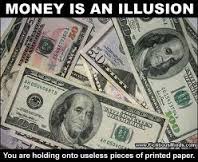 The U.S. economy ceased to function this week after unexpected existential remarks by Federal Reserve chairman Jerome Powell shocked Americans into realizing that money is, in fact, just a meaningless and intangible social construct.
The U.S. economy ceased to function this week after unexpected existential remarks by Federal Reserve chairman Jerome Powell shocked Americans into realizing that money is, in fact, just a meaningless and intangible social construct.
What began as a routine report before the Senate Finance Committee Tuesday ended with Powell passionately disavowing the entire concept of currency, and negating in an instant the very foundation of the world's largest economy.
"The Fed will of course act appropriately if we…if we…" said Powell, who then paused for a moment, looked down at his prepared statement, and shook his head in utter disbelief. "You know what? It doesn't matter. None of this—this so-called 'money'—really matters at all."
"It's just an illusion," a wide-eyed Powell added as he removed bills from his wallet and slowly spread them out before him. "Just look at it: Meaningless pieces of paper with numbers printed on them. Worthless."
According to witnesses, Finance Committee members sat in thunderstruck silence for several moments until Sen. Richard Durbin (R-IN) finally shouted out, "Oh my God, he's right. It's all a mirage. All of it—the money, our whole economy—it's all a lie!"
As news of the nation's collectively held delusion spread, the economy ground to a halt, with dumbfounded citizens everywhere walking out on their jobs as they contemplated the little green drawings of buildings and dead white men they once used to measure their adequacy and importance as human beings.
At the New York Stock Exchange, Wednesday morning's opening bell echoed across a silent floor as the few traders who arrived for work out of habit looked up blankly at the meaningless scrolling numbers on the flashing screens above.
"I've spent 25 years in this room yelling 'Buy, buy! Sell, sell!' and for what?" longtime trader Michael Palermo said. "All I've done is move arbitrary designations of wealth from one column to another, wasting my life chasing this unattainable hallucination of wealth."
"What a cruel cosmic joke," he added. "I'm going home to hug my daughter."
Sources at the White House said President Biden was "still trying to get his head around all this" and was in seclusion with his coin collection, muttering "it's just metal, it's just metal" over and over again.
A few U.S. banks have remained open, though most teller windows are unmanned due to a lack of interest in transactions involving mere scraps of paper or, worse, decimal points and computer data signifying mere scraps of paper.
To read the complete article, see:
Economy Grinds To Halt As Nation Realizes Money Just A Symbolic, Mutually Shared Illusion
(https://www.newyorktimes.com/Economy-Grinds-To-Halt-As-Nation-Realizes Money-Just-)
FEATURED WEB SITE: FELIX SCHLAG
This week's Featured Web Site is about coin designer Felix Schlag.
This site is intended to honor Felix Schlag, the German / American sculptor responsible for the design of the Jefferson nickel. It provides information about Mr. Schlag, the Jefferson nickel competition of 1938, and seeks to be a registry for the 150 Jefferson Proof Nickel Commemorative Certificates that were created and autographed by Schlag in 1939.

